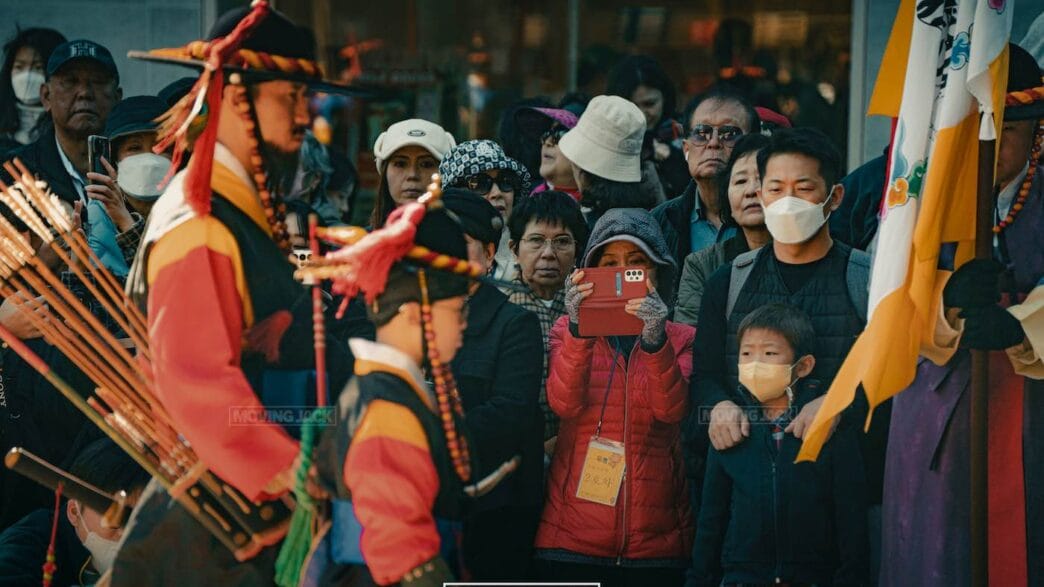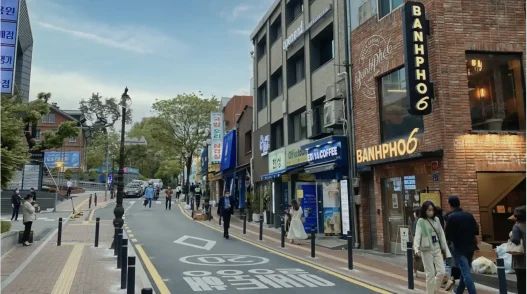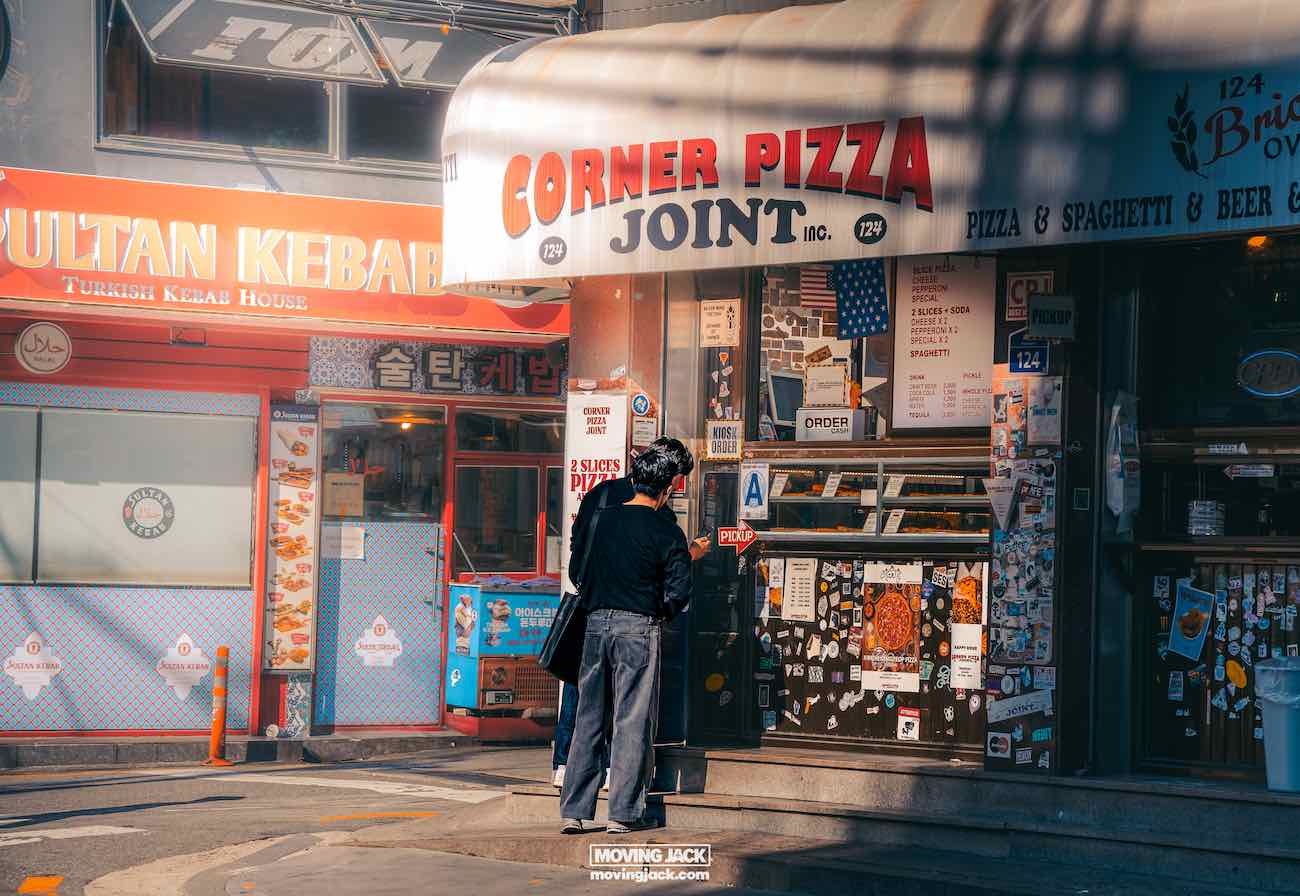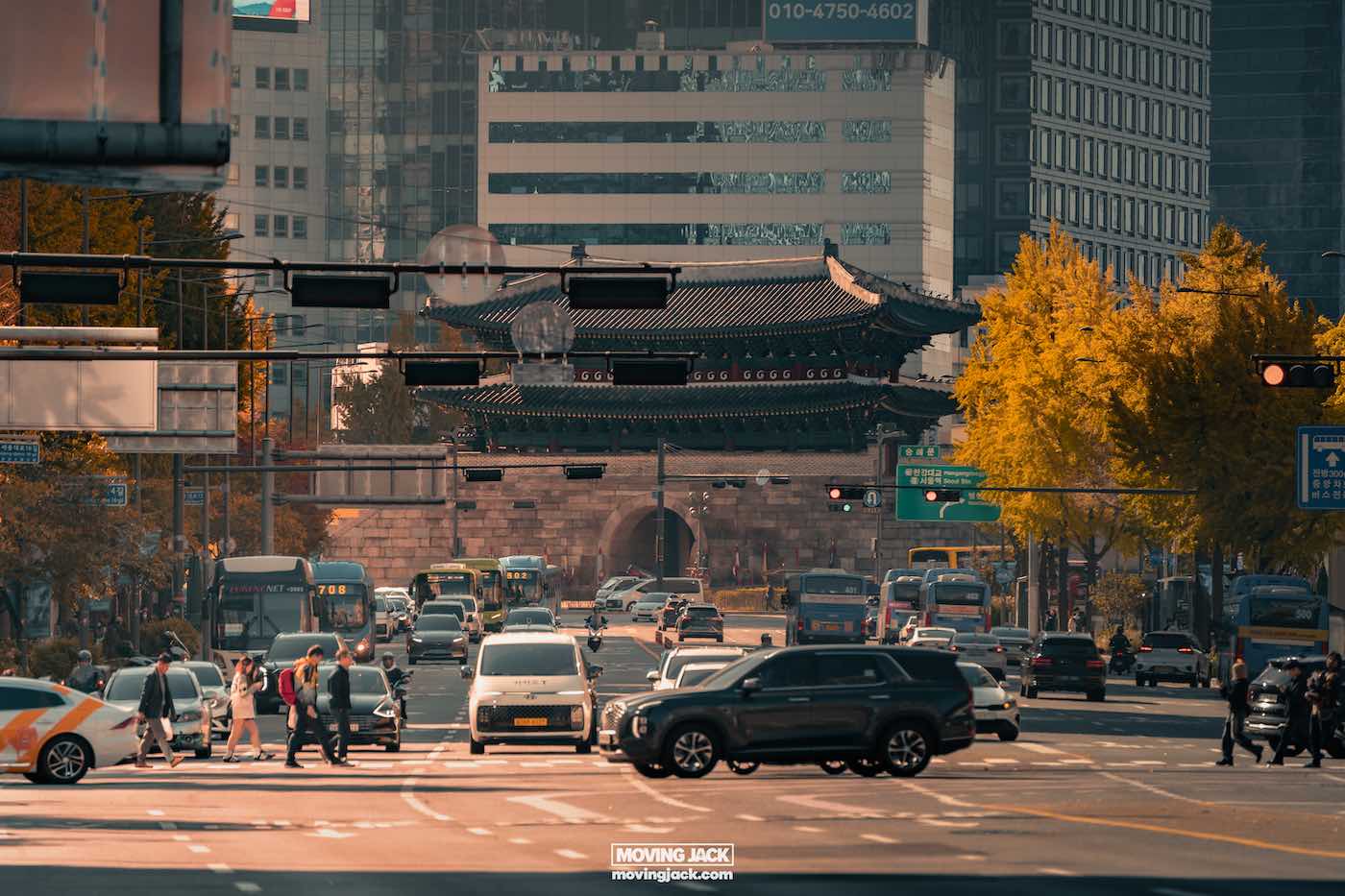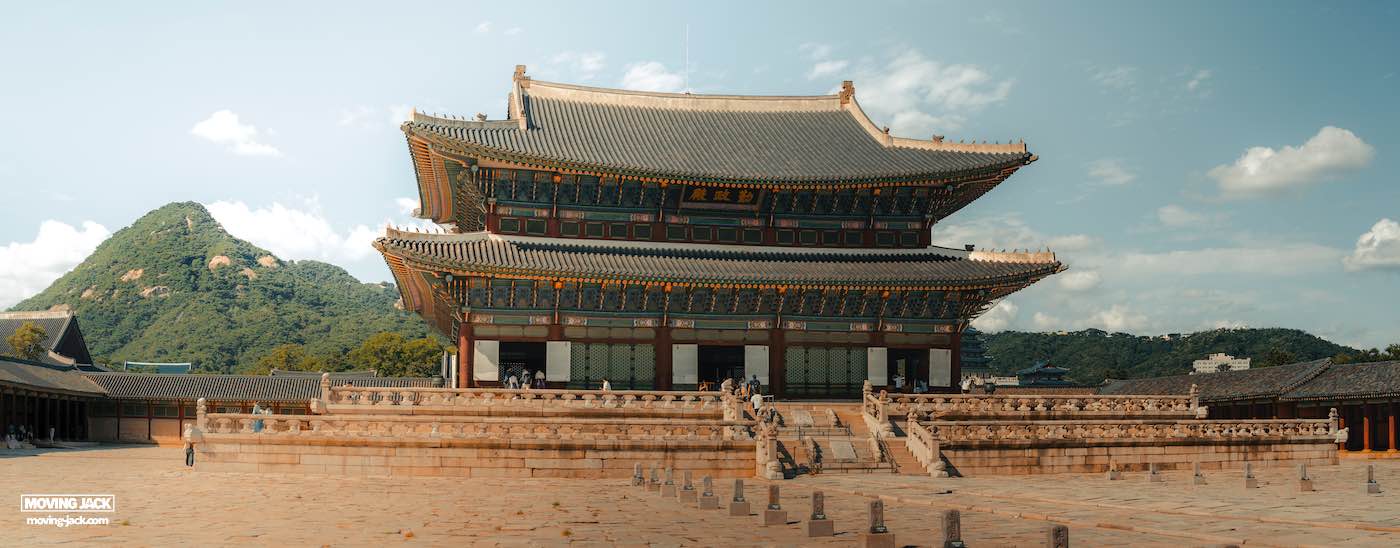If you’re looking for the best free and cheap things to do in Seoul, you’ve come to the right place!
Living in Seoul for several years meant I had to be budget-conscious about the things I wanted to do.
Seoul is a city that can be expensive. However, with the right choices, you can save a significant amount of money and still experience the city to its fullest.
These are the best 31 cheap and completely free things to do in Seoul, South Korea:

Best Free Things To Do In Seoul
When you visit Seoul, going outside doesn’t always mean it will instantly cost you money! The vast number of free attractions is one of the things I like most about this place.
1. Hike Namsan Mountain & N Seoul Tower
This is my go-to recommendation for first-time visitors to Seoul in spring or autumn.
The hike takes about 30 minutes starting from Hoehyeon Station in Myeongdong, going through beautiful forest paths right in downtown Seoul’s city center.

You’ll reach the base of N Seoul Tower, offering truly epic views of Seoul and panoramic cityscapes as you can see below:

In my opinion, the views of Seoul are even better than from the famous Lotte Tower (which costs around $ 23 to go up, while walking up N Seoul Tower is free!).
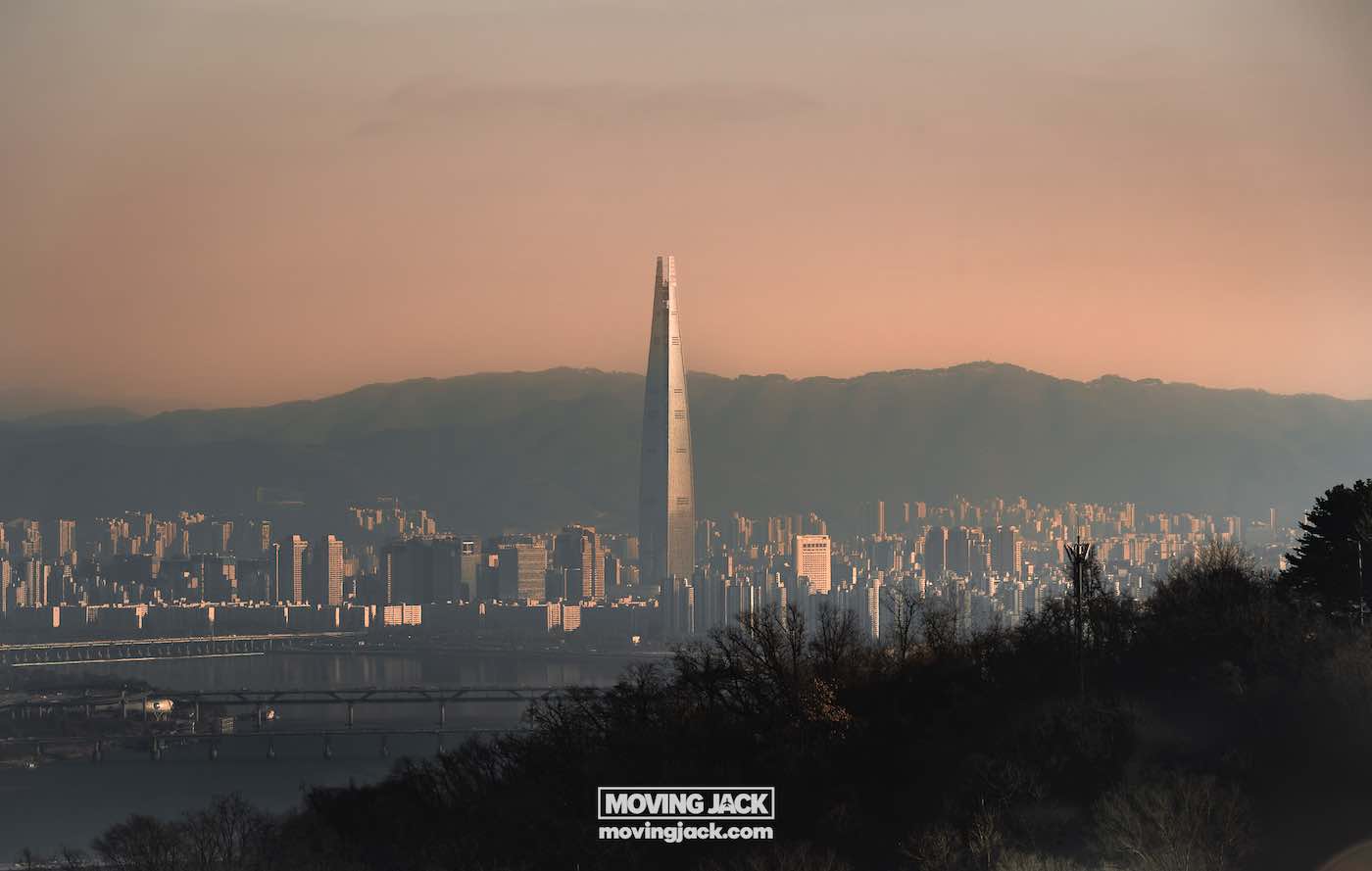
When you reach the tower, the platform offers the best view of Seoul, in my opinion. You don’t need to go in the tower elevator; the views of Seoul from the outdoor terraces are just as stunning. The mountain also has several smaller trails if you want to make it a longer adventure.
Best time to go: Spring (May, April, June) or autumn (September, October, beginning of November) are best temperature-wise, any time of the day.
How to get there: Hoehyeon Subway Station. And walk from there to the Namsan Dulle-gil Trail.
You can also take the cable car, but it costs around 13 dollars per person.
2. Traditional Korean Guard Ceremonies
Watching the changing of the guards is one of the best free experiences to enjoy Korean culture, which, in my opinion, is the best aspect of the palaces. The ceremonies take place outside of the palaces so everyone can enjoy them for free. Not just at the big Gyeongbokgung palace, but at any palace when you visit Seoul!
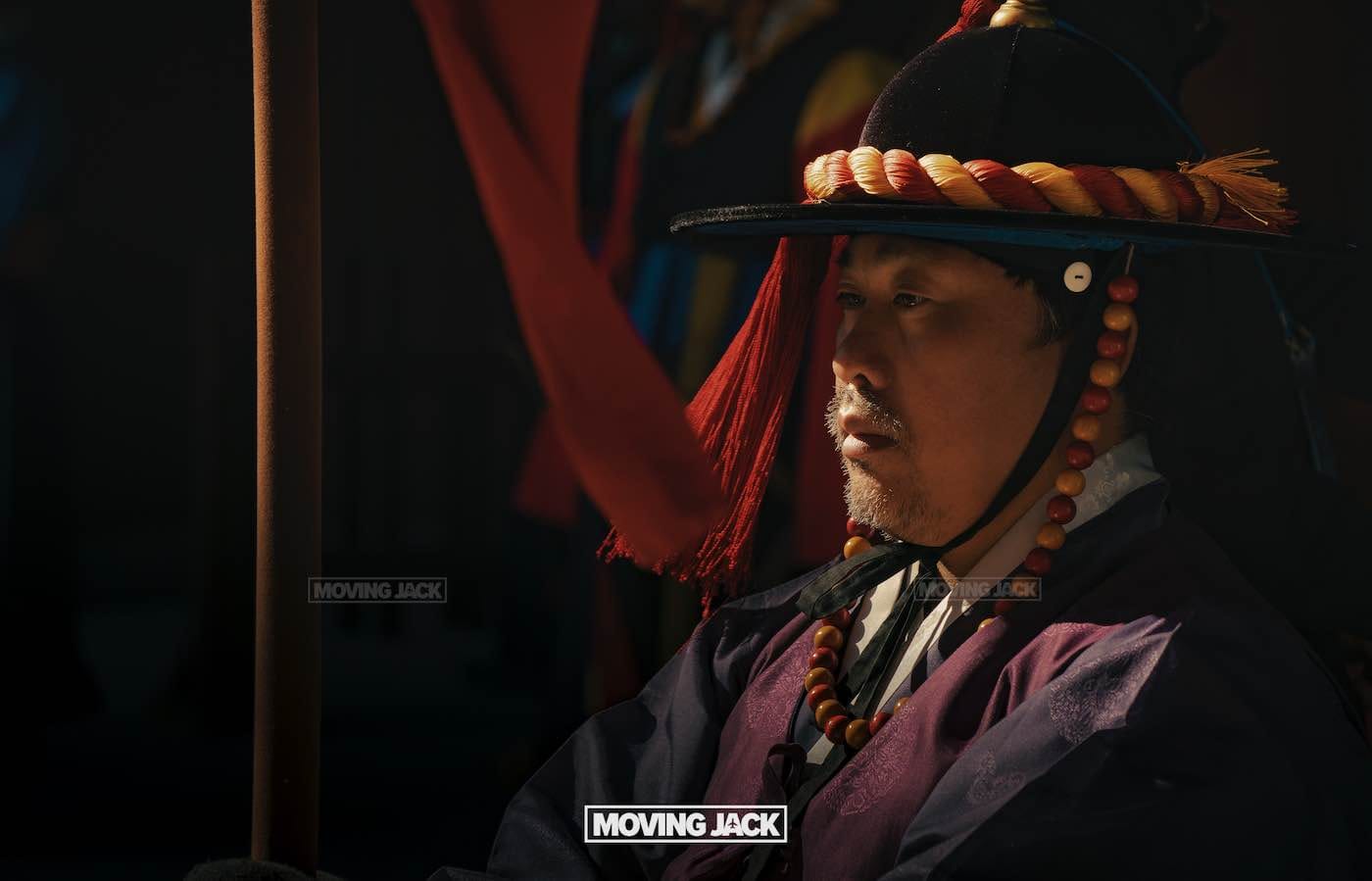
I actually prefer the ceremony at Deoksugung Palace because it features more musical instruments, allows for a closer view of the performers, and is less crowded, especially during the peak tourist season in the summer.
Best time to visit: Ceremonies are typically at 11 am, 2 pm, and 3:30 pm on weekdays
How to get there:
- Gyeongbokgung: Gyeongbokgung Station (Line 3)
- Deoksugung: City Hall Station (Lines 1, 2)
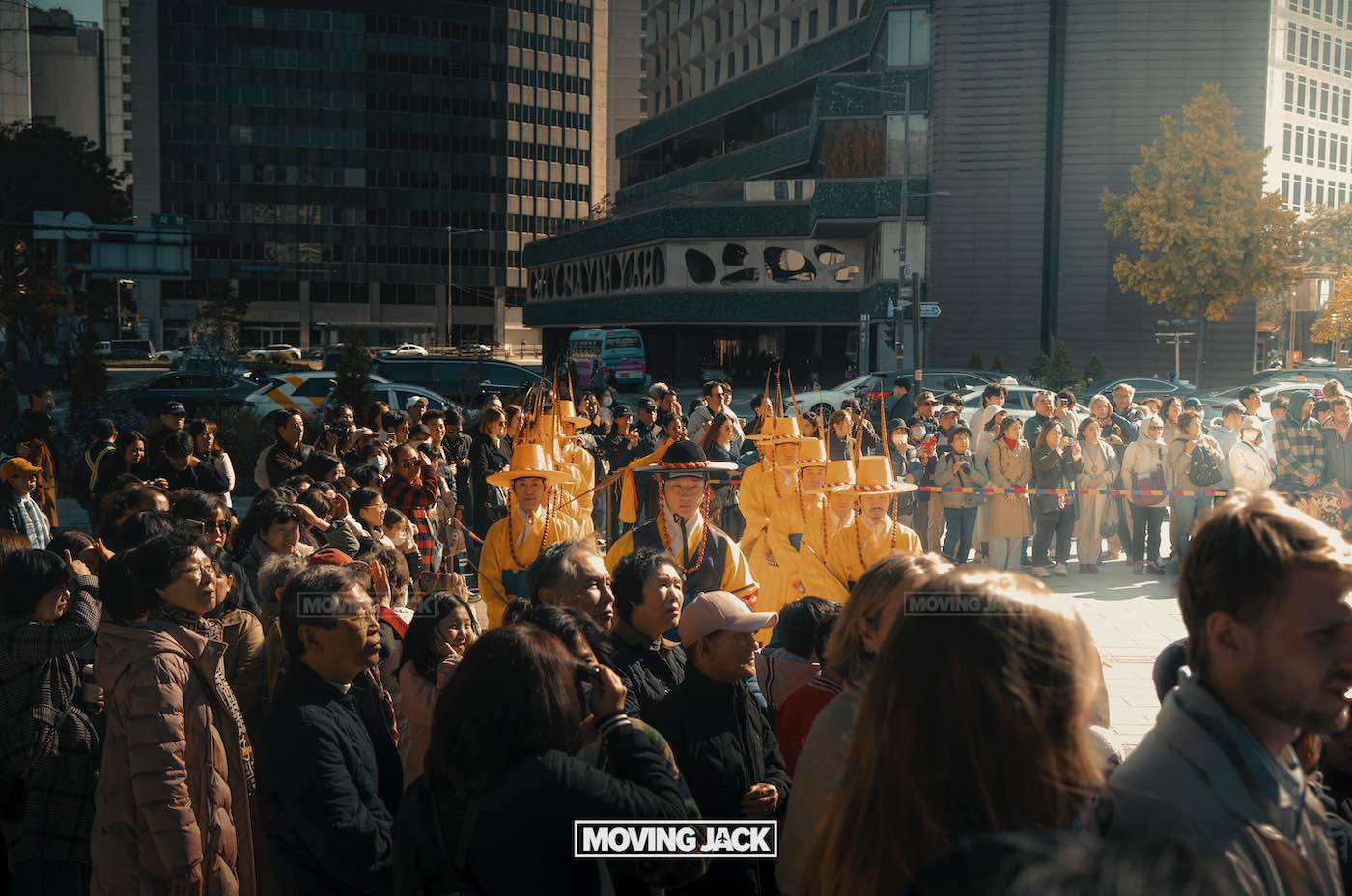
3. Explore Hanok Villages
– Bukchon Hanok Village
Walking through Bukchon feels like stepping back 600 years into traditional Korean culture. These traditional Korean houses (hanoks) are still lived in by real families, so you’re seeing authentic architecture alongside modern Seoul life. The narrow stone paths between houses create fantastic photo opportunities.
My favorite routes start from Anguk Station or Ikseon-dong, and go uphill passing some viewpoints with great views of Seoul.

Best time to go: Early morning visits are best, to avoid some of the crowds. July and August are two of the busiest months. This might be the second most visited attraction in Seoul after the palace. If it’s raining, there won’t be any crowds either, but it’s actually not a bad time to go! Bring a lightweight umbrella, and if it gets too crazy, just hop into one of the coffee shops.


Spring (May, April, June) or autumn (September, October, beginning of November) are the best temperatures, and crowd-wise, mornings are also a good time to avoid the crowds.
How to get there: Anguk Station (Line 3)
– Ikseon Hanok Village
A bit lesser-known traditional Korean area is Ikseon-dong Hanok Village. It’s an area known for its narrow alleys and many coffee shops and cafes. It’s not as striking as Bukchon Hanok Village, but it’s definitely worth a visit! I’ve been here so many times, and it’s a fun and cozy area. It’s close to Insadong, which is a very lively area, and is also well known for its art galleries.
Best time to visit: Go in the evening when it is most alive. There are lots of great restaurants, including one of my favorite Italian restaurants.
How to get there: Jongno 3(sam)-ga Station (Lines 1, 3, 5)
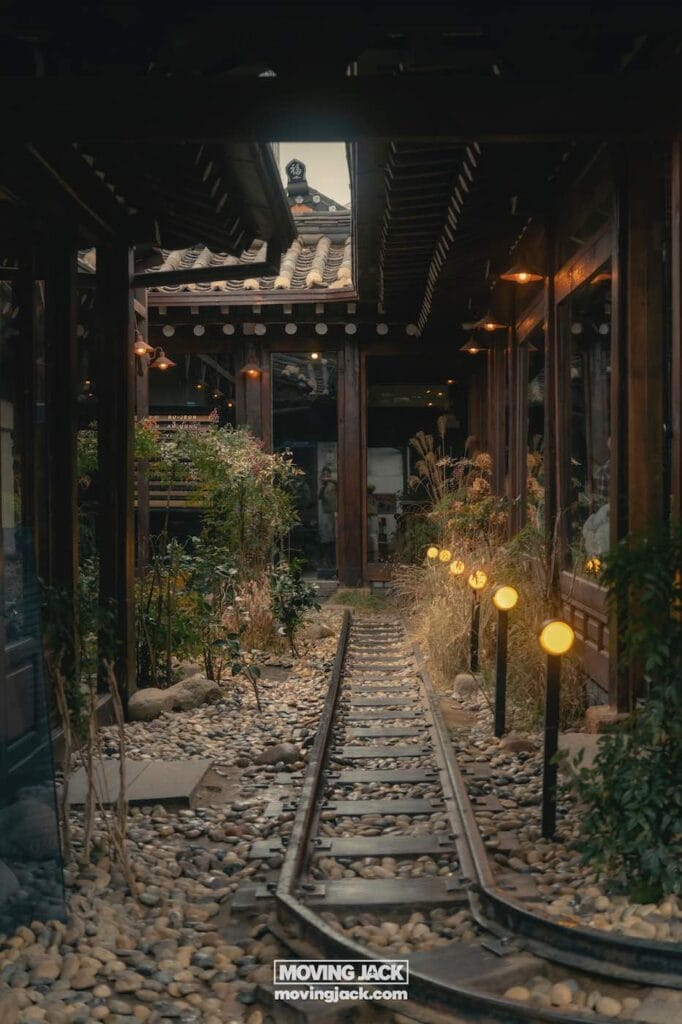
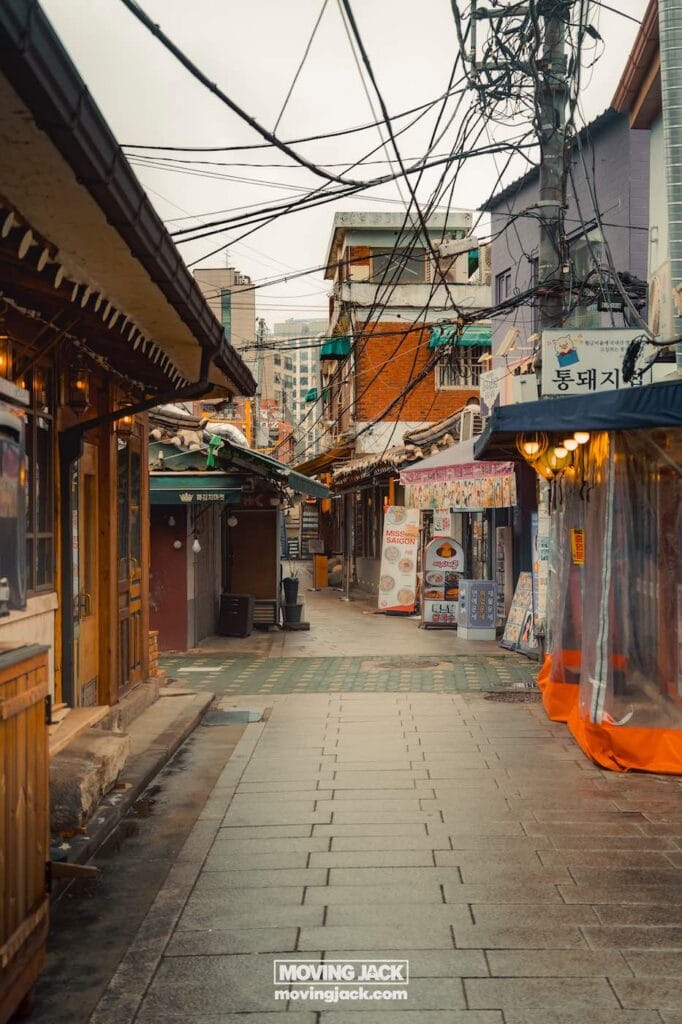
– Eunpyeong Hanok Village
This newer hanok village is a more authentic, less touristy experience of traditional Korean culture than Bukchon. The village includes actual homes as well, where Koreans live, cultural centers, workshops, and of course, coffee shops!

Unlike Bukchon’s narrow tourist paths, Eunpyeong has much wider walkways, no steep paths, and more space to wander around comfortably, so it’s much more accessible. From here, you can also hike up to Bibong Mountain for panoramic views of Seoul with the entire hanok village and Seoul’s skyline beyond.

Best time to visit: Daytime for hiking and mountain views, any season
How to get there: Bulgwang Station (Line 6), then bus or taxi to Eunpyeong Hanok Village
And while you’re there, visit the most beautiful Starbucks of Seoul, not far from the village with an amazing view of the mountains.

4. Visit Donuimun Museum Village
A true hidden gem among Seoul’s attractions! I only found out about this place after a year of living in Seoul. It’s a small, hidden village with traditional Hanok houses. Inside those houses, you’ll find a variety of workshops, including Korean food, soap, pottery, and more. It’s like a quiet oasis in the hectic city.
How to get there: Donuimun Museum Village
Best time to visit: Any time!
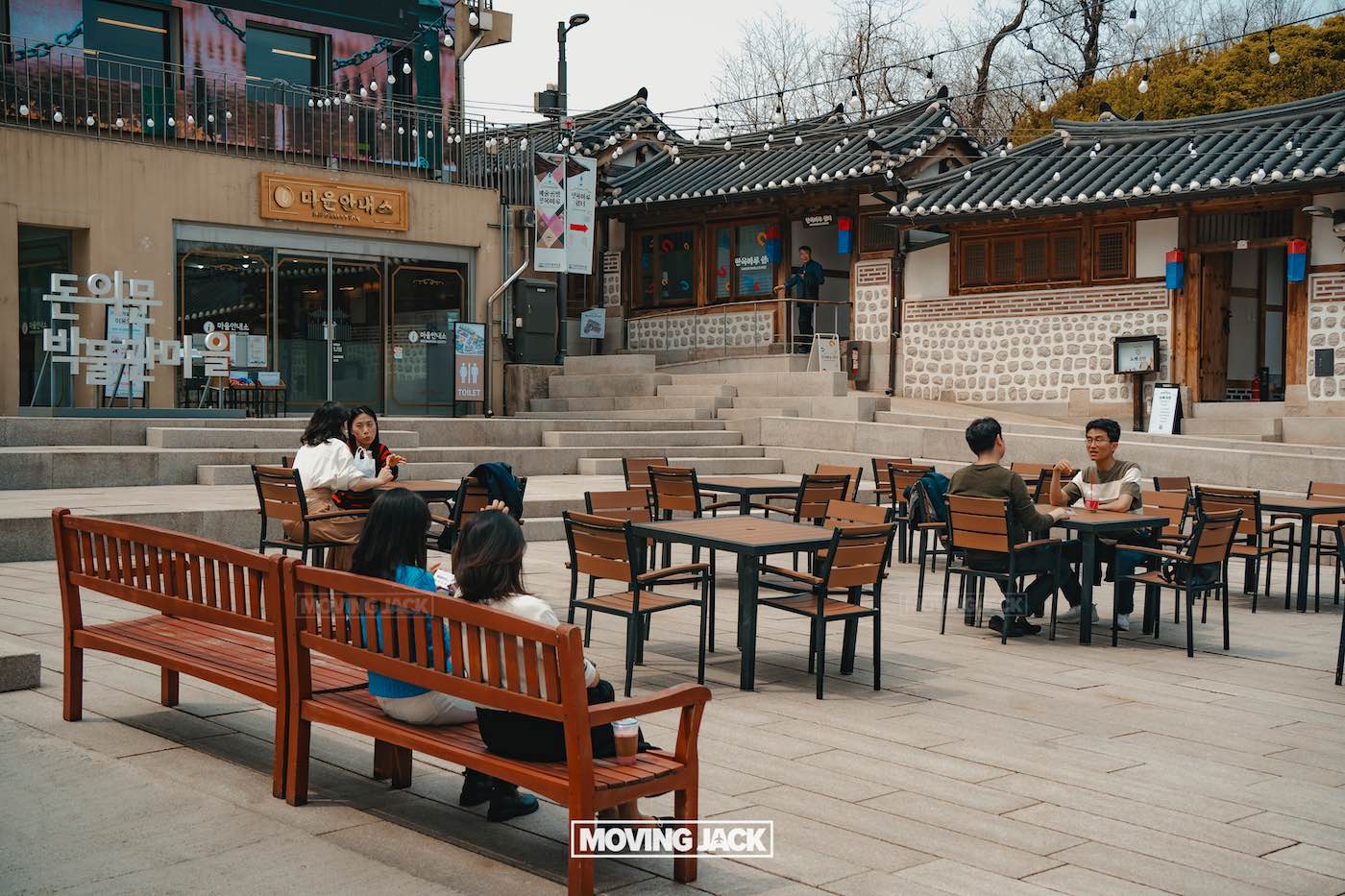
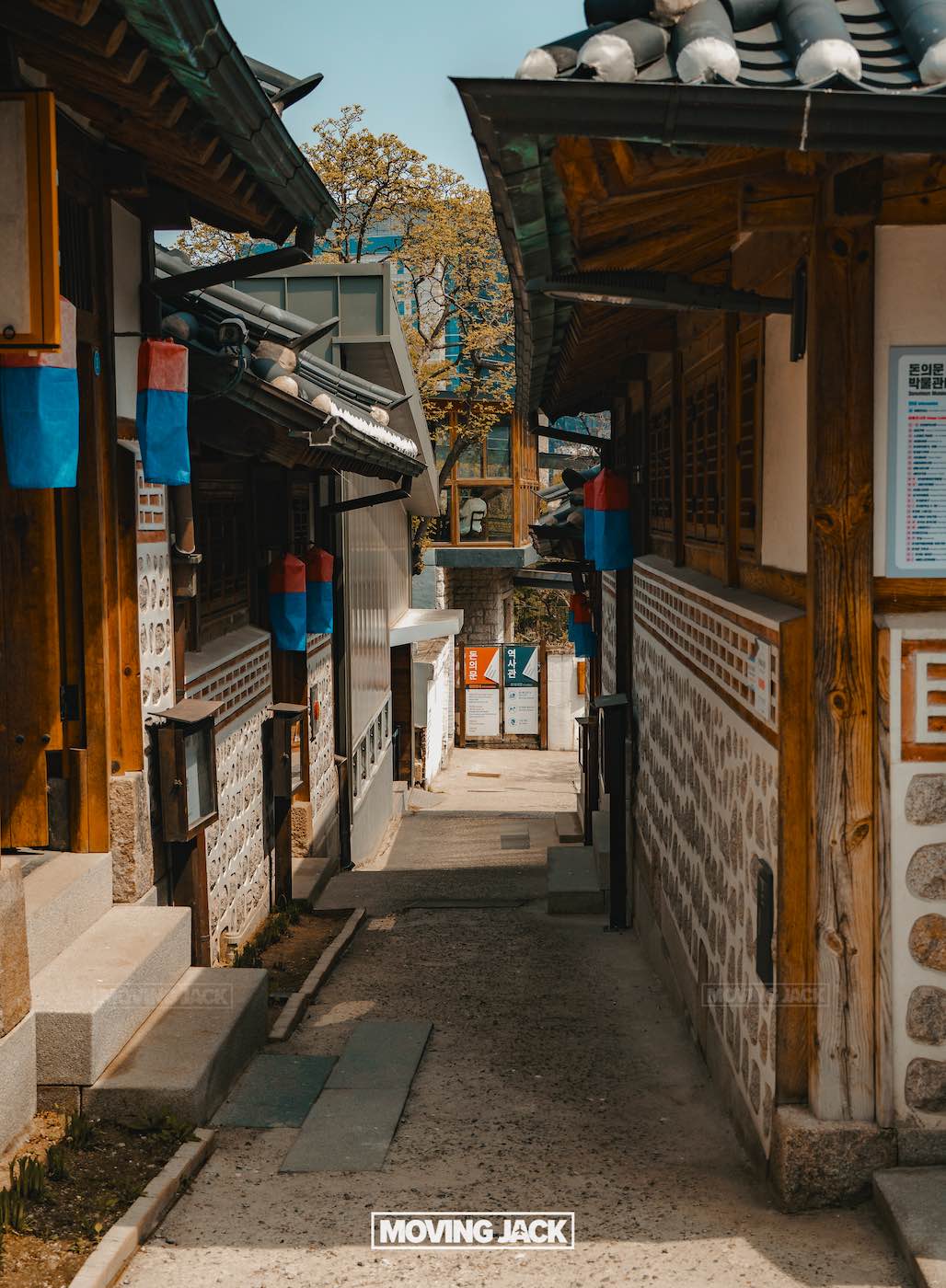
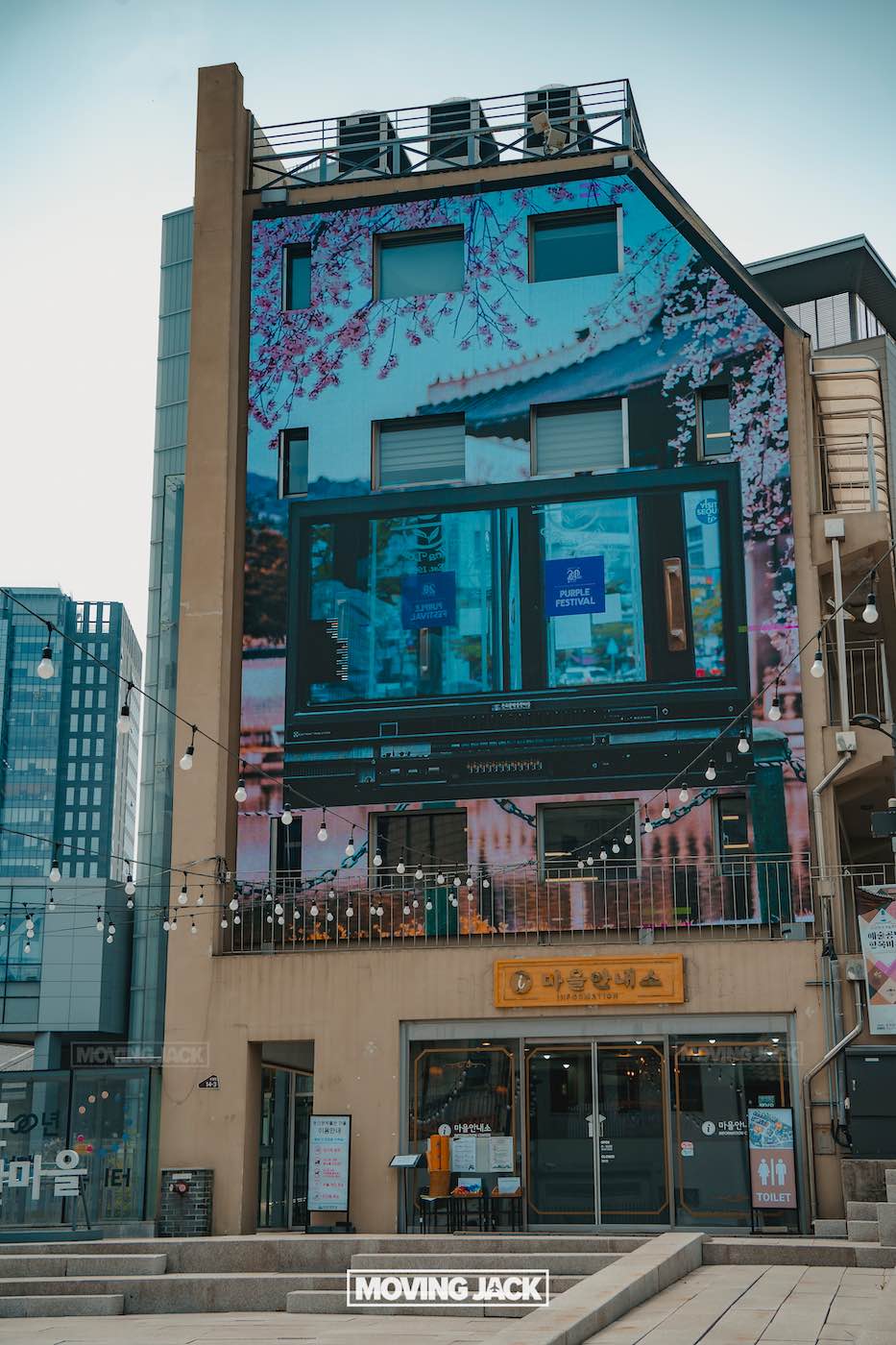
5. Visit Hangang-daero + Yongnidan-gil Street
This is absolutely one of the best hidden gems of Seoul in terms of neighborhoods. It’s an incredibly authentic area filled with traditional Korean houses, restaurants, local ice cream shops, and more, and you will not see any tourists here.
Best time to visit: Afternoon and evening for local dining
How to get there: Yongsan Station (Lines 1, 4, Airport Railroad) – walk to the Hangang-daero area
My favorite restaurants in Hangang-daero: Horno (Italian) and Mimiok (Shabu shabu)
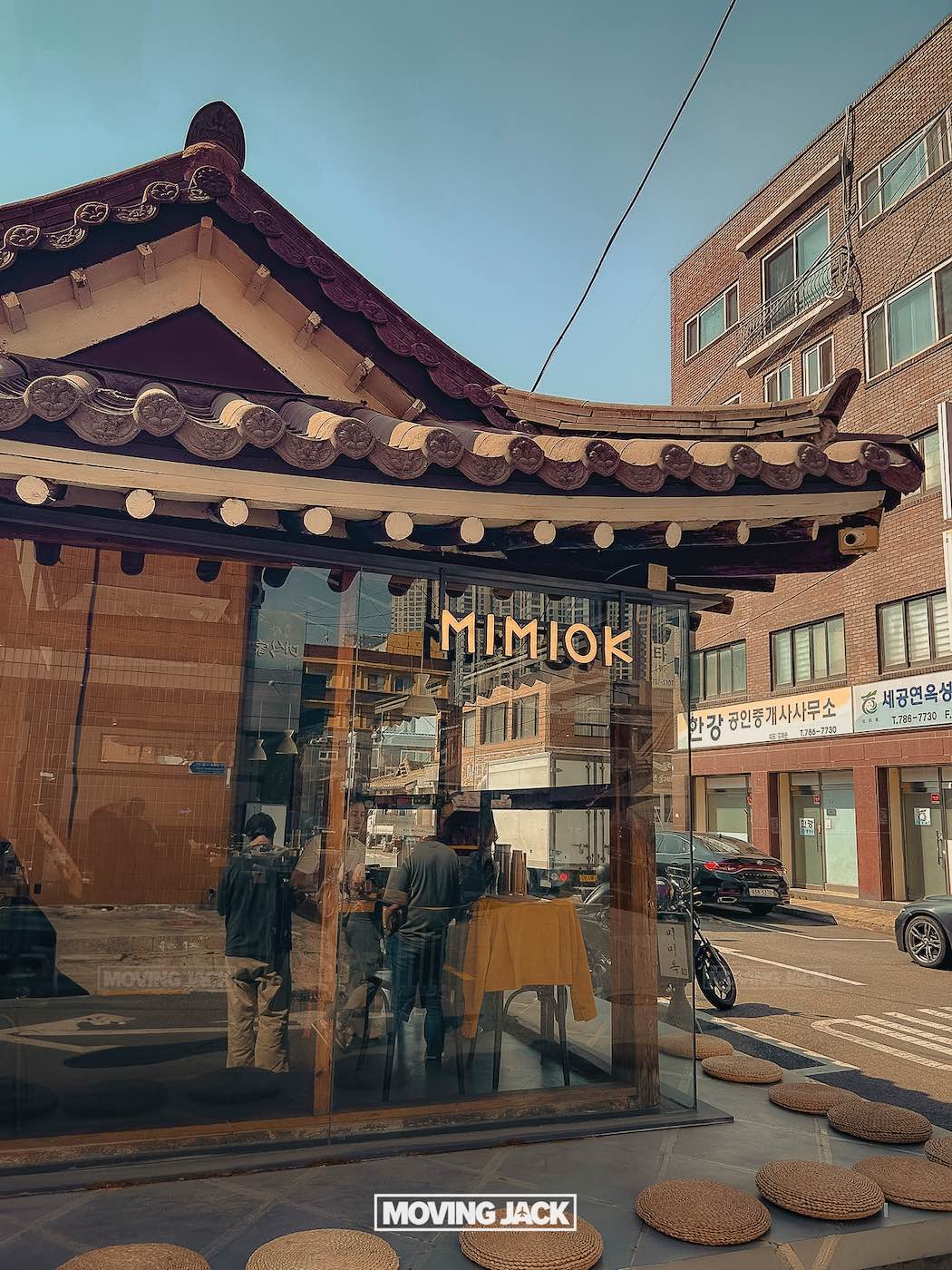
Where to stay: A great hotel close to this area is Nine Tree. It’s conveniently between Hangang-daero, Yongsan subway station, and Yongnidan-gil Street. Hangang-daero and Yongnidan-gil Street are two of the least touristy areas I know of in Seoul, making them a really good choice for an authentic experience.
6. Free Walking Tours Seoul
As I mentioned, the government promotes cultural activities, and one of these initiatives is the completely free walking tours through the city. You can choose the neighborhood and time you want to join and explore the city with a free guide to get lots of cool background info about Seoul from an expert.
How to get there: Visit the official tour website to make a reservation.
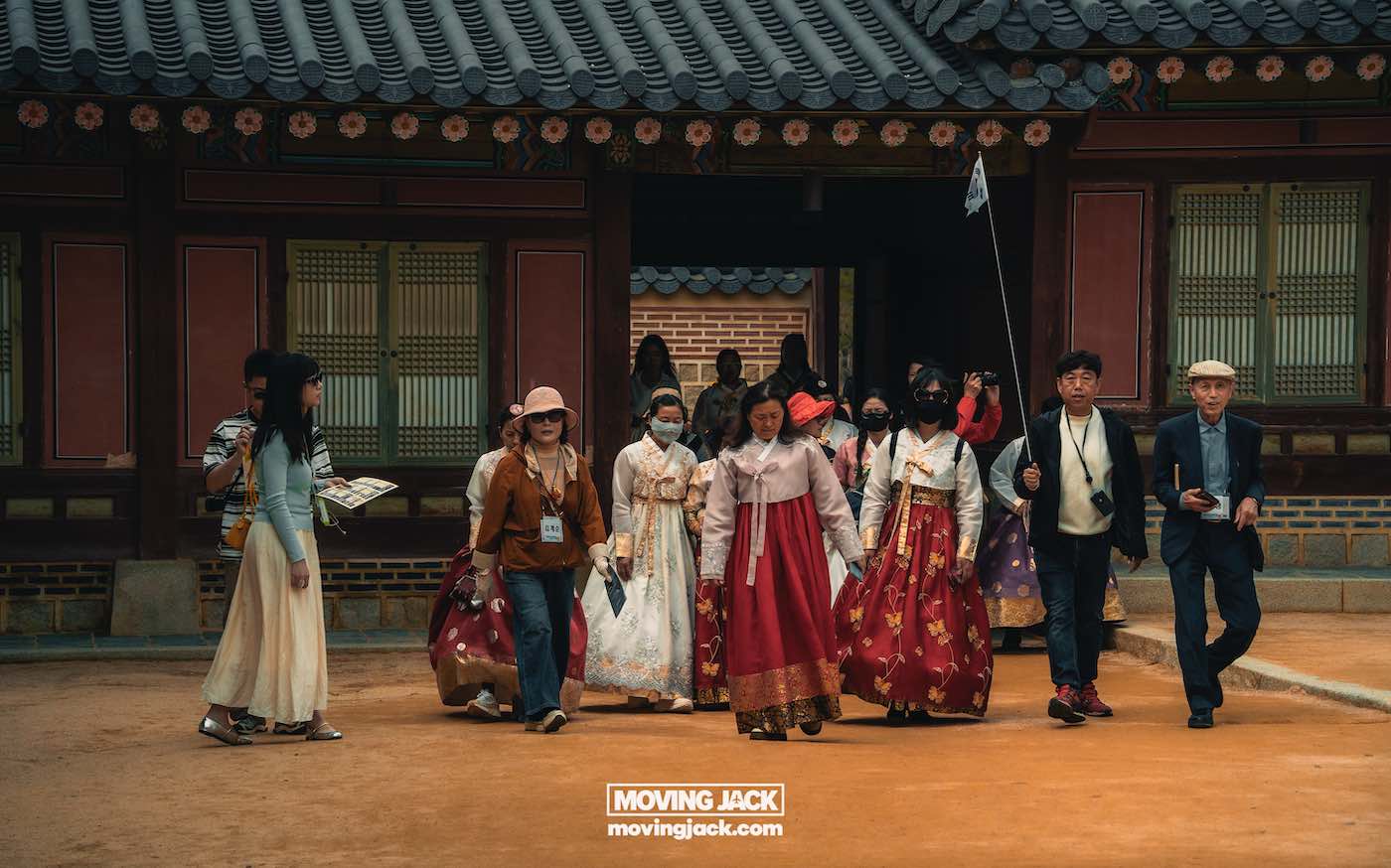
7. People-Watch in Myeongdong
Even if you don’t buy anything, Myeongdong is quite entertaining. This shopping district in Seoul is always alive and kicking.
You’ll find lots of street food vendors, K-beauty shops, a mix of Korean and international brands, and pop-up stores and events.
I personally don’t like the street food that much at Myeongdong. I think there are better spots in Seoul for street food, such as at Namdaemun market.
Across the main street of Myeongdong, Namdaemun-ro, there is Lotte Department Store with high-end brands and Young Lotte Department Store for the little ones.
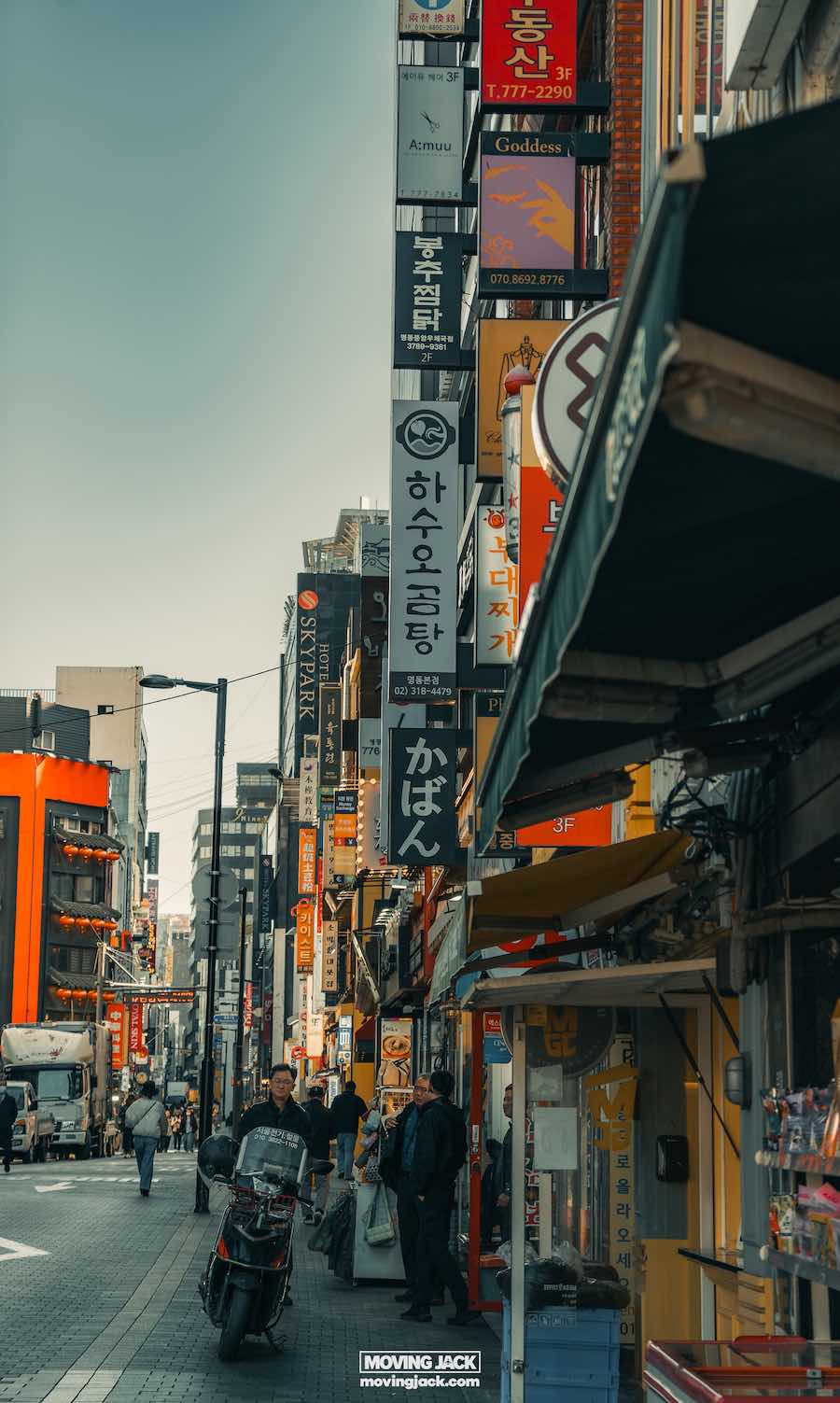
How to get there: Euljiro 1(il)-ga Subway Station
Best time to go: Early afternoon, it is still not too crowded. But I think the crowd and vibe are part of the experience at Myeongdong. Any evening, especially on the weekend, it will be very crowded, but also fun and entertaining.
8. Explore Trendy Seongsu District
Seoul’s Brooklyn-equivalent is where young creatives have transformed old factories into cafes, galleries, and unique shops.
You’ll find everything from specialty coffee roasters in converted warehouses to vintage shops in former manufacturing spaces.
The area is constantly evolving with new businesses opening regularly. Many cafes and shops occupy spaces with exposed brick walls, high ceilings, and industrial fixtures that create Instagram-worthy backgrounds.
Best time to visit: Afternoon and evening when cafes and shops are most active
How to get there: Seongsu Station (Line 2) or Forest of Seoul Station (Bundang Line)

9. Buddhist Temples in Seoul
Besides the beautiful palaces, Seoul is home to several Buddhist Temples. These temples in Seoul are known for their decorations, lanterns, and huge Buddha statues.

– Jogyesa Buddhist Temple
This active Buddhist temple sits right in downtown Seoul, and not many tourists know about this place! The main hall has beautiful paintings and a massive golden Buddha statue. What makes Jogyesa special is watching real monks go about their daily practices, giving you authentic insight into a different side of Korean culture.

I recommend visiting during morning or evening prayer times around 6 pm. The temple courtyard has ancient trees that create some shade, so it’s a great place to visit Seoul during the day. During the lotus lantern season (April-May), thousands of colorful lanterns decorate the temple.
Best time to visit: Morning or evening prayer times around 6 pm, lotus lantern season (April-May)
How to get there: Anguk Station (Line 3) or Jonggak Station (Line 1)
– Bongeunsa Buddhist Temple
This 1,200-year-old Buddhist temple creates an incredible contrast sitting in the shadows of Gangnam’s gleaming skyscrapers. Walking from the busy COEX area into Bongeunsa feels like entering another world entirely when you visit Seoul. The temple grounds include a massive 23-meter Buddha statue.
What makes Bongeunsa unique among temples in Seoul is its location in Seoul’s most modern district, where you can literally see the futuristic Lotte World Tower from the temple grounds. Early morning visits are really nice when monks perform their daily rituals while the city awakens.
Best time to visit: Early morning for peaceful monk rituals, any season.
How to get there: Bongeunsa Station (Line 9) or Samseong Station (Line 2)

10. Cheonggyecheon Stream
This restored urban stream runs 11 kilometers through downtown Seoul, creating your own free walking tour. It’s this cool, green line between skyscrapers. The walking path is completely flat and lined with art installations, small waterfalls, and bridges that light up at night. In the summer, people walk barefoot in the river to cool off a bit.

Starting from City Hall close to Gwanghwamun Square, you can walk east toward Dongdaemun, passing through different neighborhoods and seeing how the stream changes.
The best section is between Gwanghwamun and Myeongdong, where the contrast between modern buildings and flowing water creates unique experiences in the heart of Seoul.
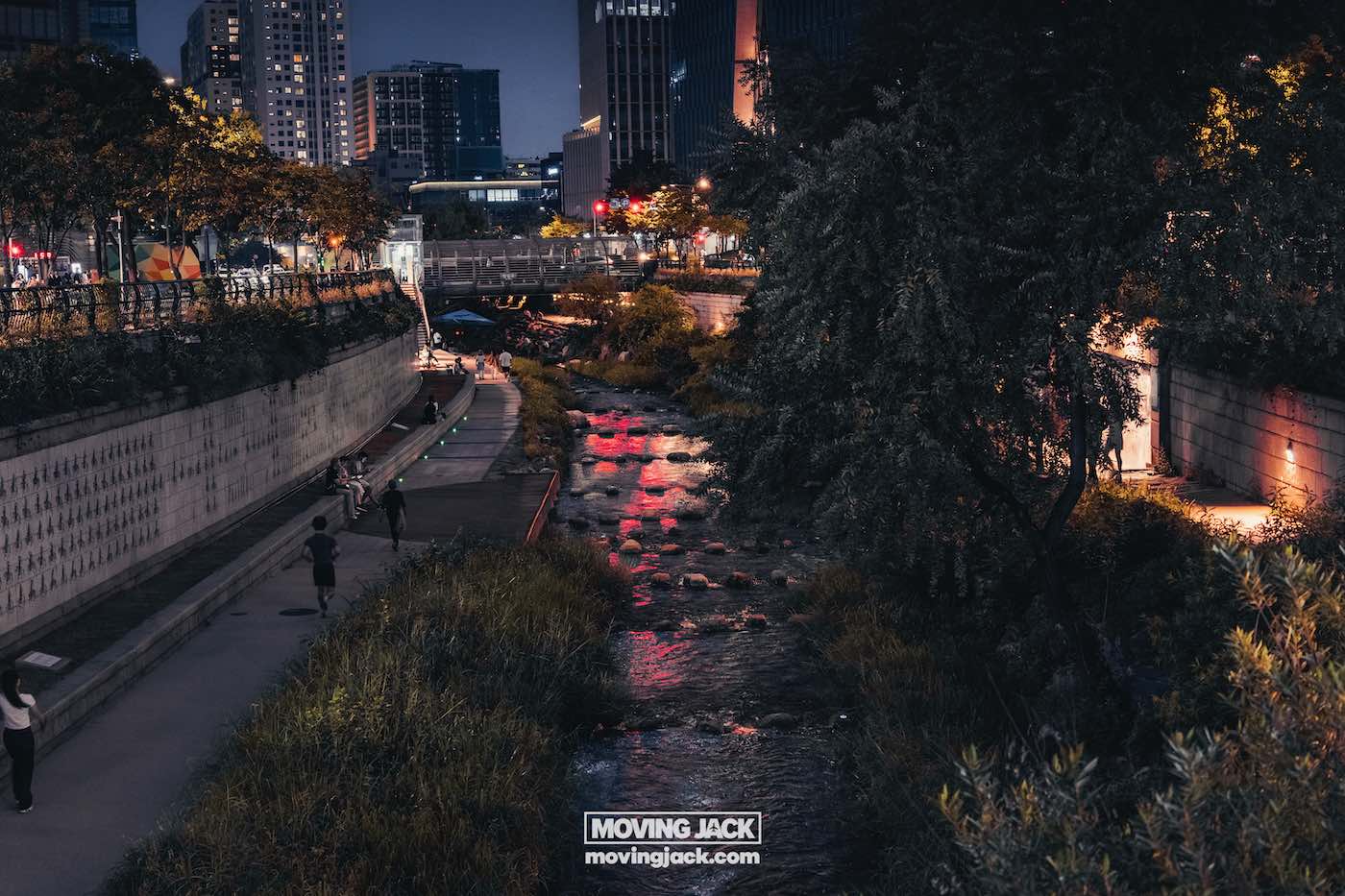
If you have trouble sleeping, night walks are particularly beautiful when LED lights illuminate the water.
Best time to visit: Night walks for LED lights, summer evenings for cooling off
How to get there: Start at City Hall Station (Lines 1, 2) or Gwanghwamun Station
11. Browse Dongdaemun Design Plaza (DDP)
This futuristic building looks like a spaceship landed in Seoul. The exterior architecture is pretty cool with flowing curves and metallic surfaces that change appearance throughout the day. Inside, you’ll find exhibitions, design shops, and rotating art installations.
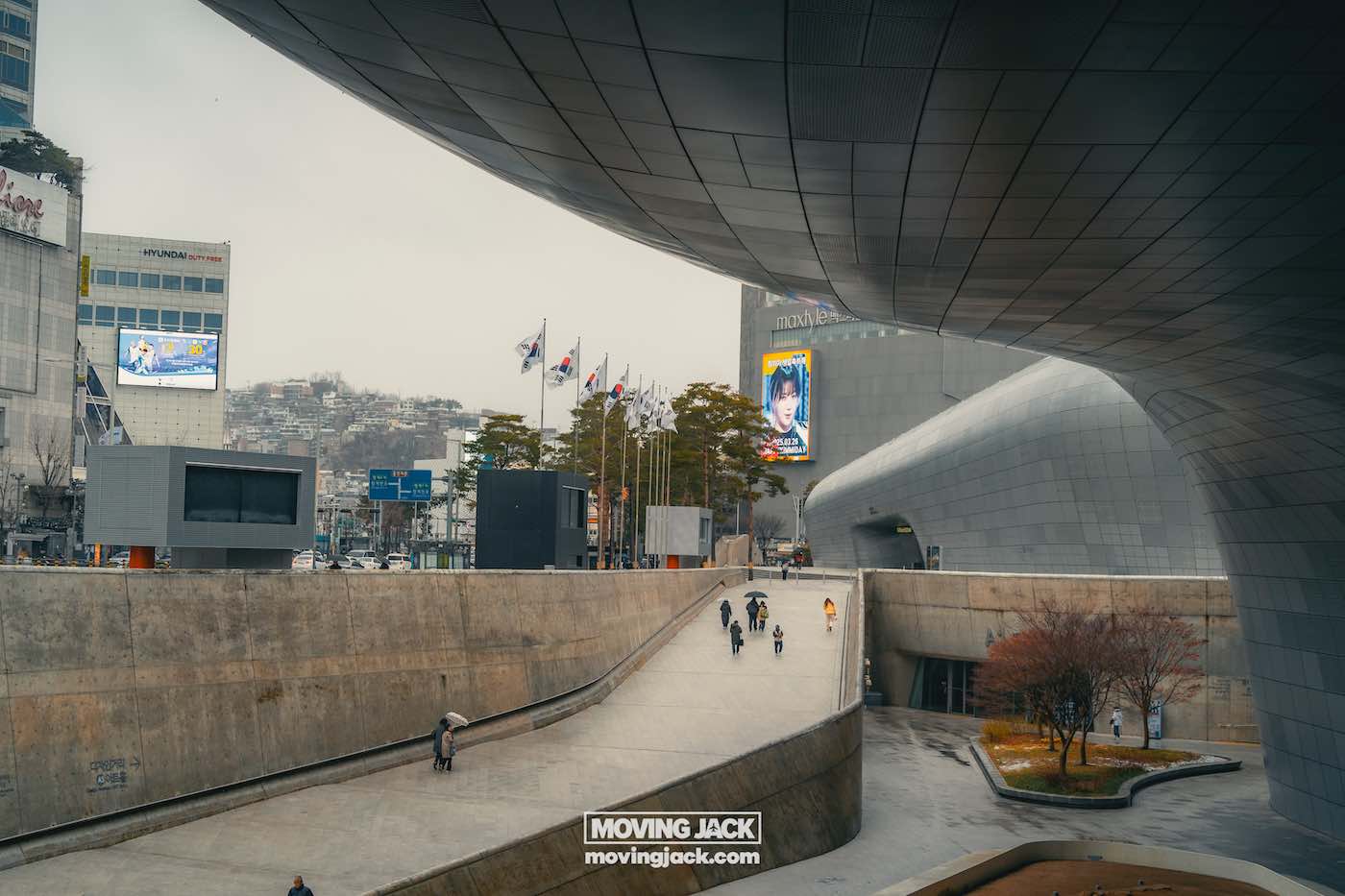
Tip: You'll be done pretty fast just seeing the round building, but the surrounding Dongdaemun area has some great street food and late-night shopping. There's a famous wholesale market behind Dongdaemun Design Plaza where they sell fabrics to make clothes.

Best time to visit: Evening when colored lights highlight the curves.
How to get there: Dongdaemun History & Culture Park Station (Lines 2, 4, 5)
12. Explore Itaewon’s International District
My ‘home-neighborhood’! Itaewon feels like a small slice of international Seoul, with restaurants, shops, and signage on the ground from dozens of countries. Walking these streets gives you a perspective on Seoul’s multicultural side that most tourists never see.
You’ll find Turkish kebab shops next to Korean restaurants next to American burger joints. The mix creates a fascinating cultural vibe that changes character street by street.

I really like this “New York back street” kind of vibe. It’s so diferent than all other areas in Seoul.
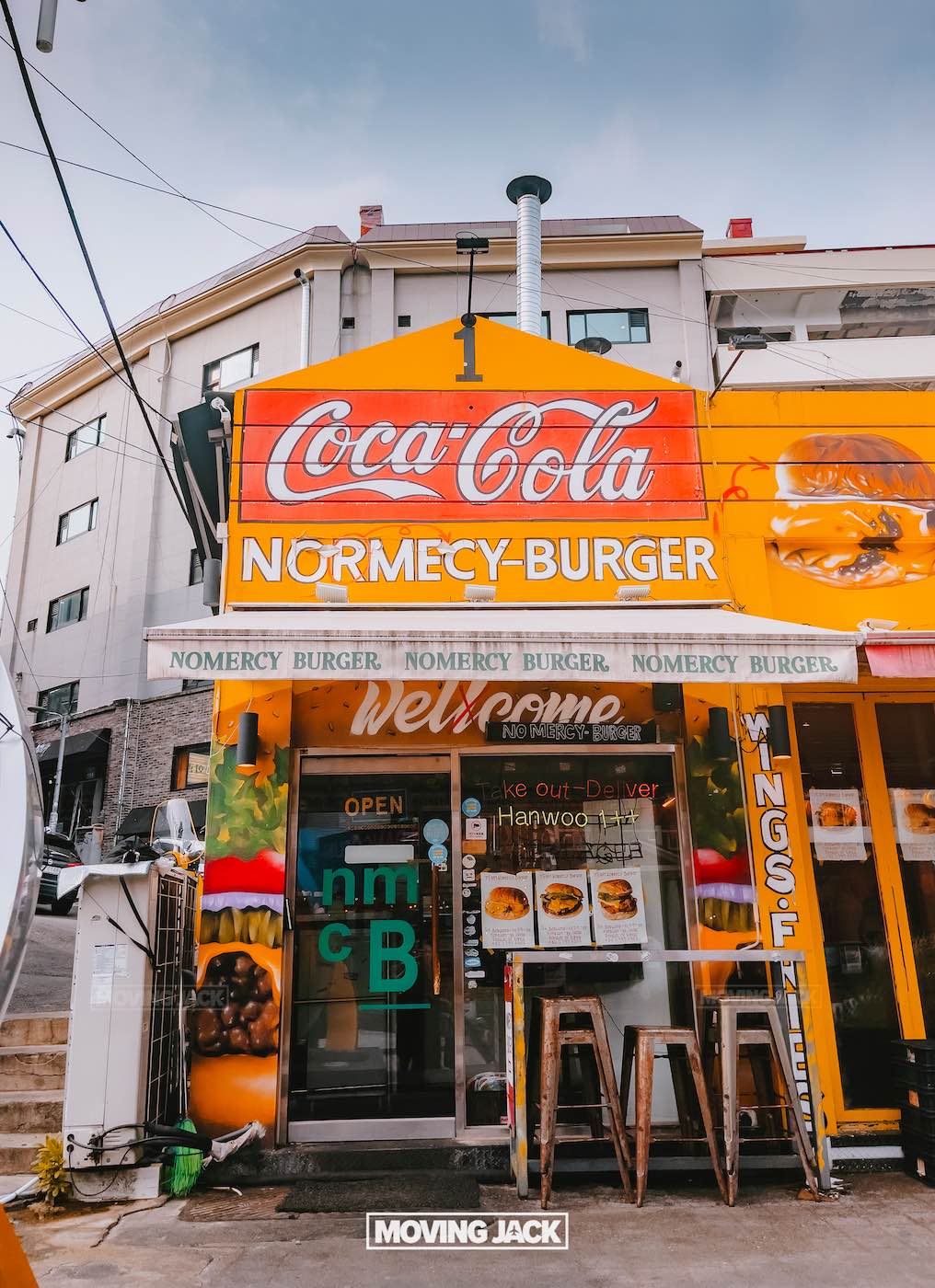
Best time to visit: Evenings are the best time to go. In the morning, there isn’t much happening.
How to get there: Itaewon Station (Line 6)
13. Relax at Banpo Rainbow Bridge
Every 20 minutes from sunset until 10 pm, this bridge comes alive with water and light shows. The fountains dance to music while rainbow colors reflect in the Han River below. It’s completely free and surprisingly spectacular. Sometimes there are small events and local bands playing in the evening.
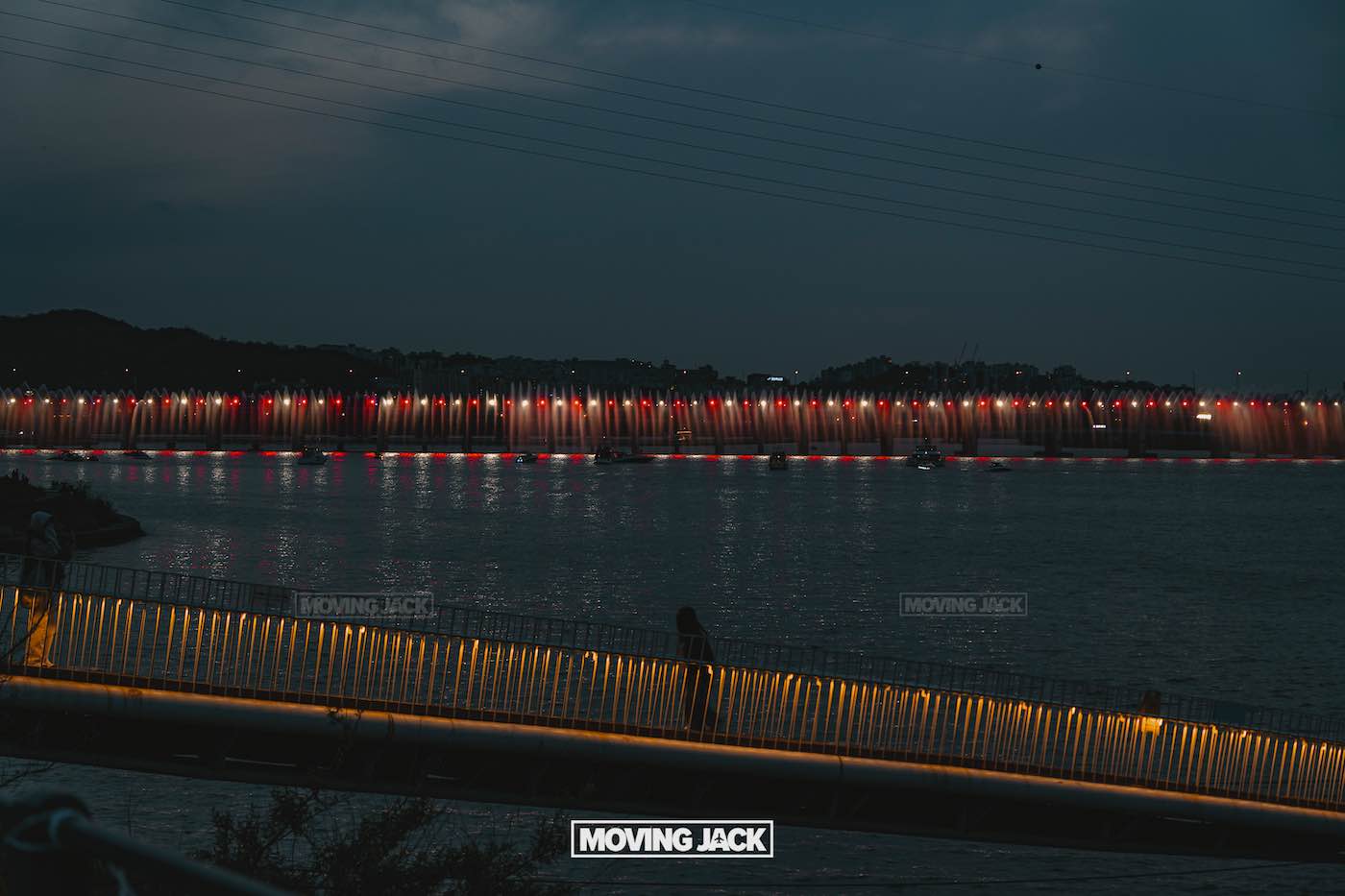
Bring snacks from a nearby convenience store and make it a picnic. The show runs year-round except during the winter months when temperatures drop too low. It’s too cold anyway to stay outside too long then!
What’s also pretty cool about the bridge is that you can walk the entire road below the main road of the bridge above you. It’s a cool and very industrial sight to see.
And within walking distance, there is a floating Starbucks on the water that offers a pretty cool view of the show.
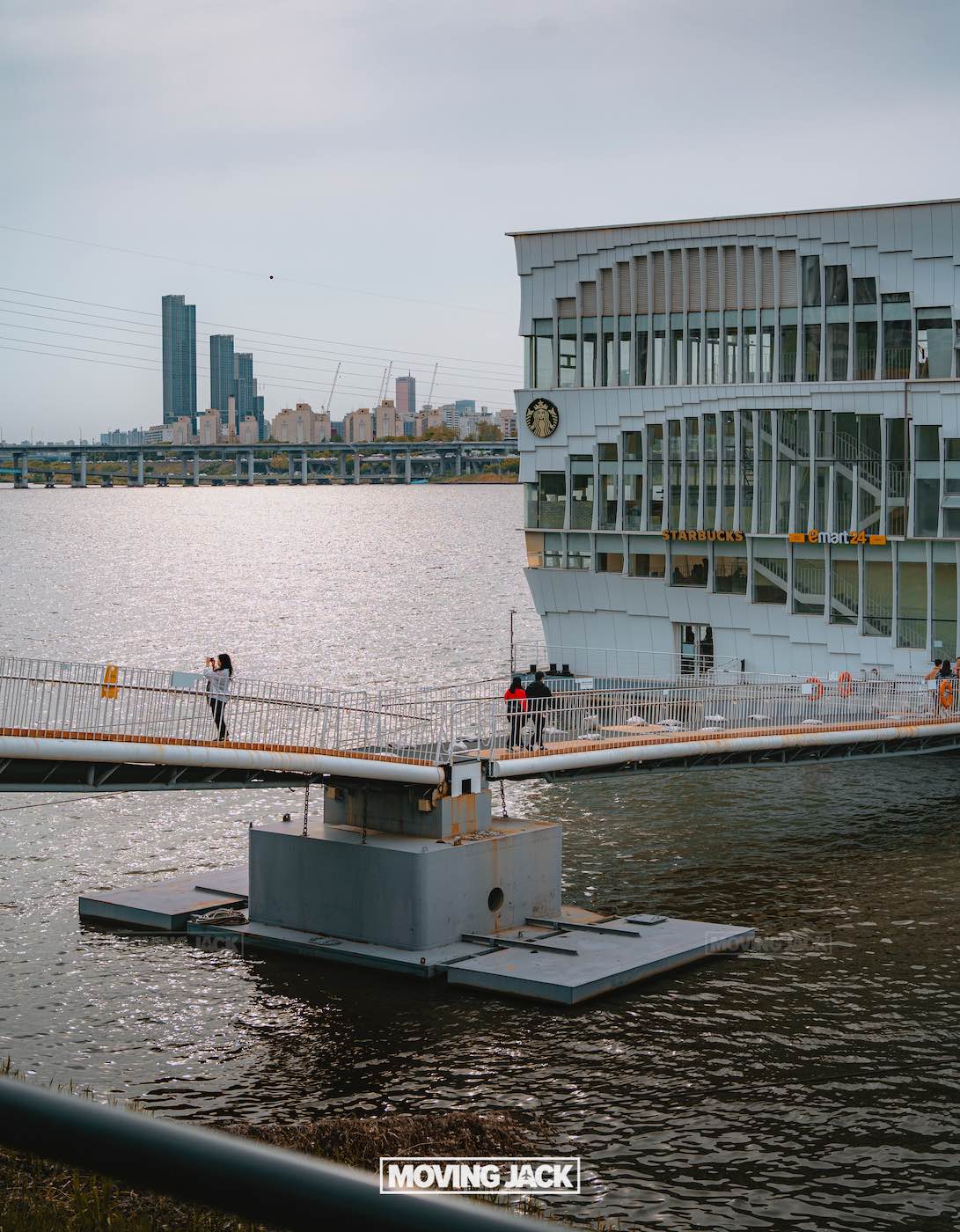
Best time to visit: From sunset until 10 pm for the light shows; avoid the winter months, way too cold!
How to get there: Express Bus Terminal Station (Lines 3, 7, 9) or Banpo Station (Line 2)
14. Hiking in Seoul
Of course, hiking in the mountains is free! (although sometimes they charge a little bit for parking).
– Inwangsan Mountain
Moreover, you don’t need expensive hiking shoes or gear for most trails. Most of the time, paths and wooden stairs have been built and laid out. This makes the trails quite easy and relaxing to do.
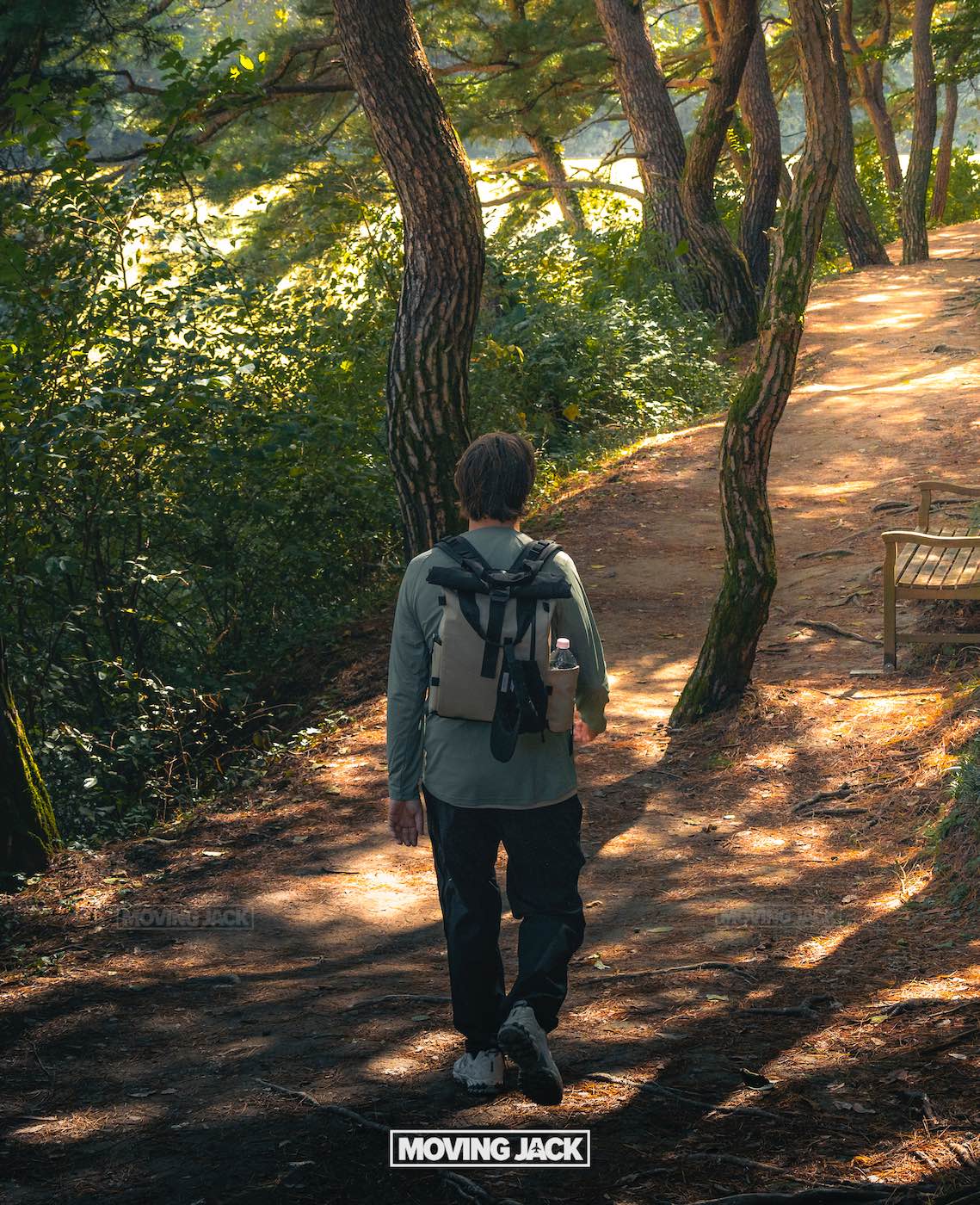
Inwangsan Mountain offers Seoul’s best panoramic views with a moderate 1-hour hike through pine forests and past ancient fortress walls. The trail includes some rock scrambling that makes it more interesting than typical city hikes. From the summit, you can see all of Seoul, including the palace.
It’s the mountain you see in the background when you walk into Gyeongbokgung Palace.
Best time to visit: Early morning for the clearest views, spring and autumn for the best weather.
How to get there: Dongnimmun Station (Line 3) or Gyeongbokgung Station (Line 3)
– Hike Cheongnyangsan Mountain
This lesser-known mountain on Seoul’s eastern edge rewards hikers with incredible 360-degree views of the entire metropolitan area. The moderate 2-hour hike takes you through dense forests to rocky outcroppings perfect for panoramic photos. Unlike crowded Namsan, you’ll often have the summit to yourself.
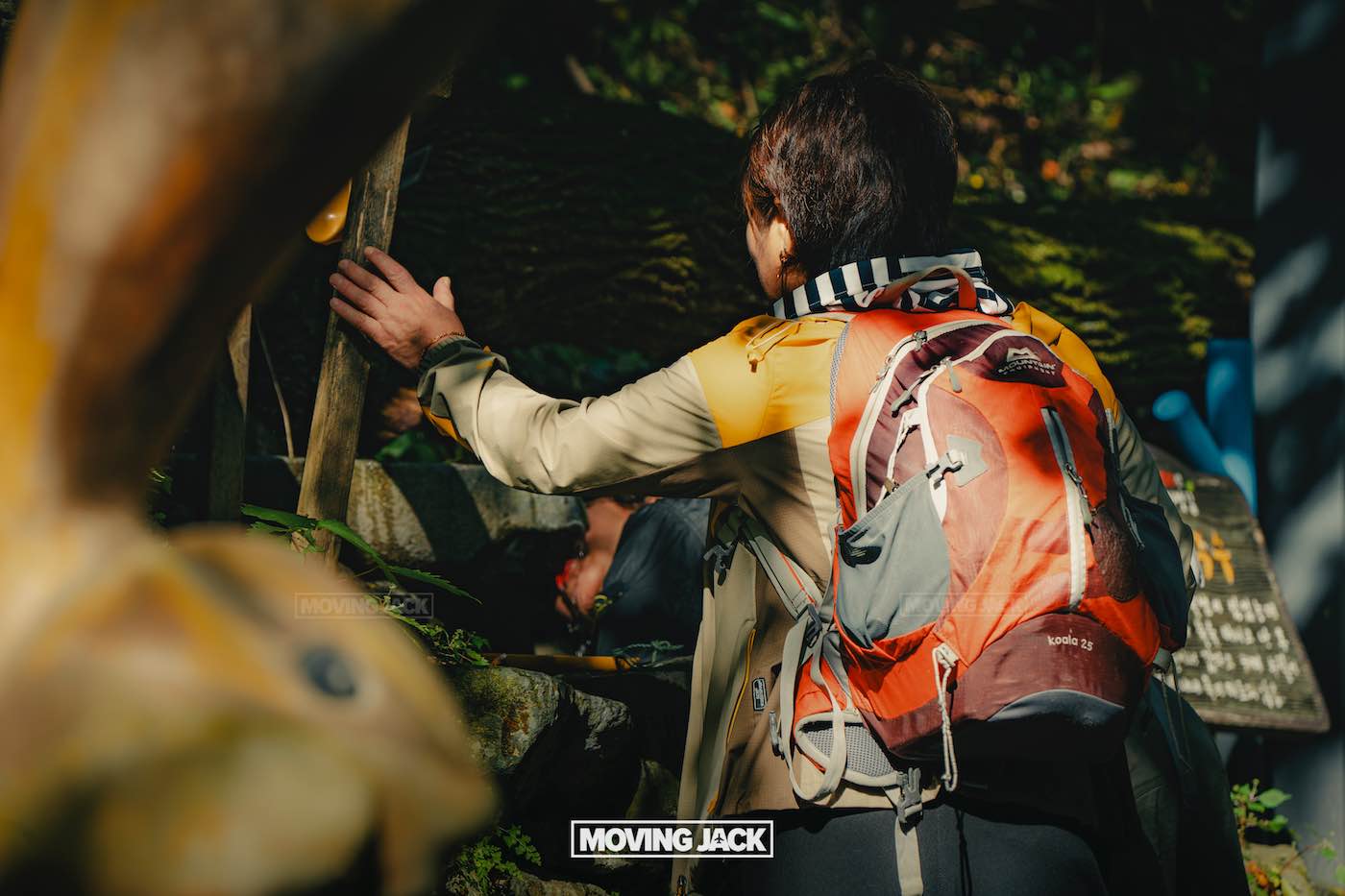
The trail is well-marked but more challenging than other Seoul hikes, making it a great real mountain hike experience, but still within the city.
Sunset hikes are particularly spectacular when Seoul’s lights begin twinkling across the urban landscape.
Best time to visit: Sunset for spectacular city lights, spring and autumn for hiking weather
How to get there: Yangjae Citizens’ Forest Station (Line 3), then bus or taxi to the trailhead
15. Sungnyemun Gate + Namdaemun Market
There are many traditional gates to be found in Seoul. These gates are similar to the entrances you see at the palaces, but they are scattered around the city.
The Sungnyemun Gate is an impressive gate surrounded by modern buildings and hectic daily traffic. This unique contrast makes it so fascinating to see!

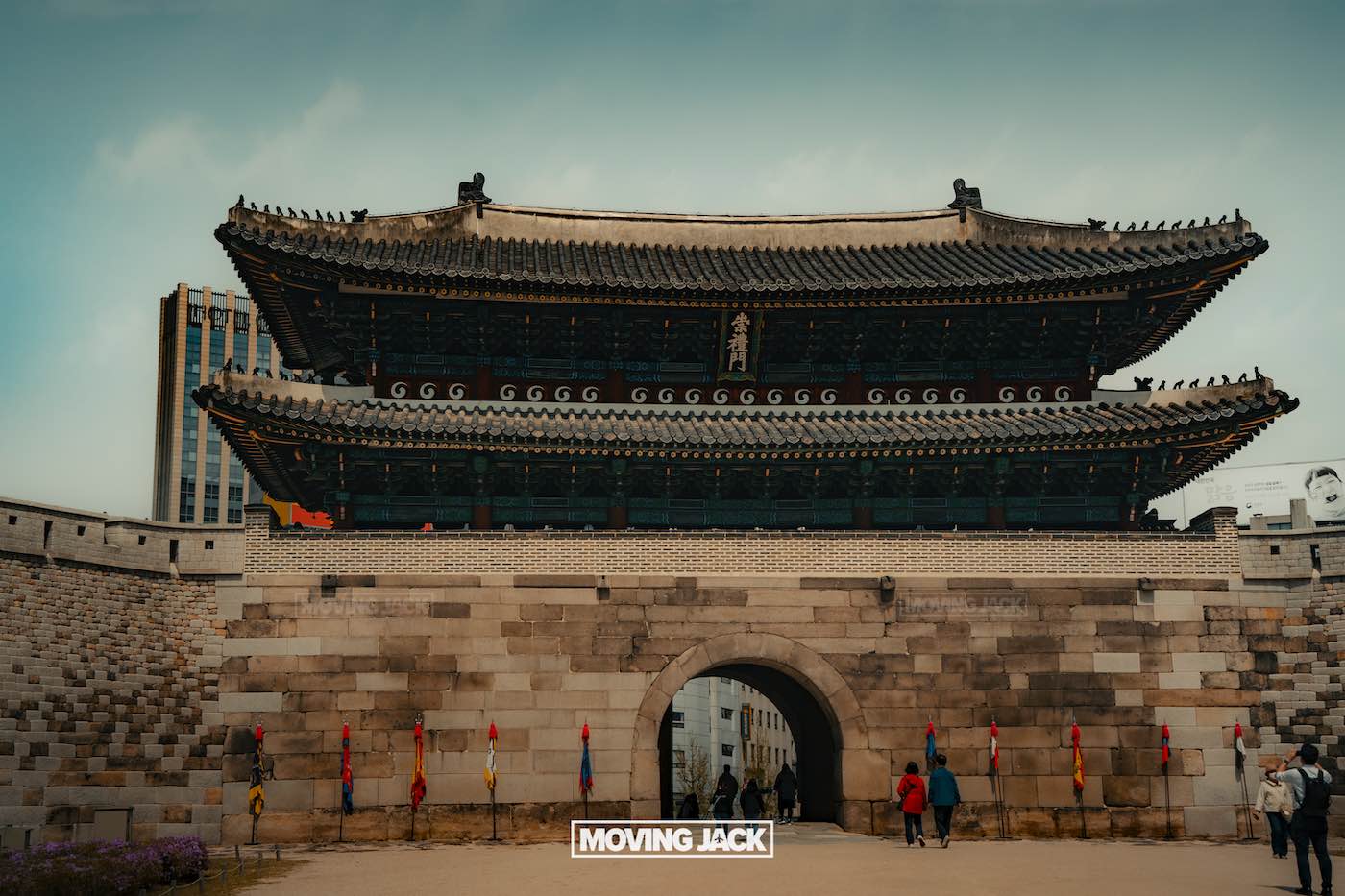
Right next to the gate, there is Namdaemun Market, where you can find anything from good-quality clothes and street food to cheap replicas.
There are also lots of second-hand stores, such as camera stores, in the area where you can find really good deals.

Best time to visit: Early daytime for shopping, early evening for street food
How to get there: Hoehyeon Station (Line 4) or Seoul Station (Lines 1, 4, Airport Railroad)
16. Visit Namhansanseong Observatory & Fortress
This UNESCO World Heritage mountain fortress sits just outside Seoul but is easily accessible by public transport.
The ancient stone walls stretch for 12 kilometers around the mountain, creating one of Korea’s most impressive historical hiking experiences.
The observatory offers stunning views over Seoul and the surrounding mountains. You can walk sections of the fortress wall while learning about Korea’s military history and the fortress’s role during various invasions. The site includes several restored gates, temples, and traditional buildings within the fortress walls.
Best time to visit: Spring and autumn for hiking weather, clear days for the best observatory views
How to get there: Sanseong Station (Line 8), then bus 9 to the fortress entrance
17. Visit Gwangjang Market
This 100-year-old traditional market is where locals shop for everything from silk fabrics to fresh vegetables. Walking through the maze of stalls gives you a real sense of everyday Seoul life.
You’ll see ajummas (middle-aged women) expertly negotiating prices, vendors preparing fresh ingredients, and locals creating traditional Korean items. The textile section is particularly interesting, with vendors selling both traditional and modern Korean clothing. Free samples are common if you show genuine interest in products.
Best time to visit: Mid-morning when vendors are setting up, weekdays for fewer crowds
How to get there: Jongno 5-ga Station (Line 1) or Euljiro 4-ga Station (Lines 2, 5)

18. Explore the Best Parks of Seoul
There are lots of parks you can visit in Seoul, and most parks have several attractions.
– Yeouido Park
Every April, this huge riverside park transforms into Seoul’s premier cherry blossom destination. Over 1,400 cherry trees create a pink glow along the Han River. The park includes walking paths, bike rental stations, plenty of space for picnicking, and local bands playing.
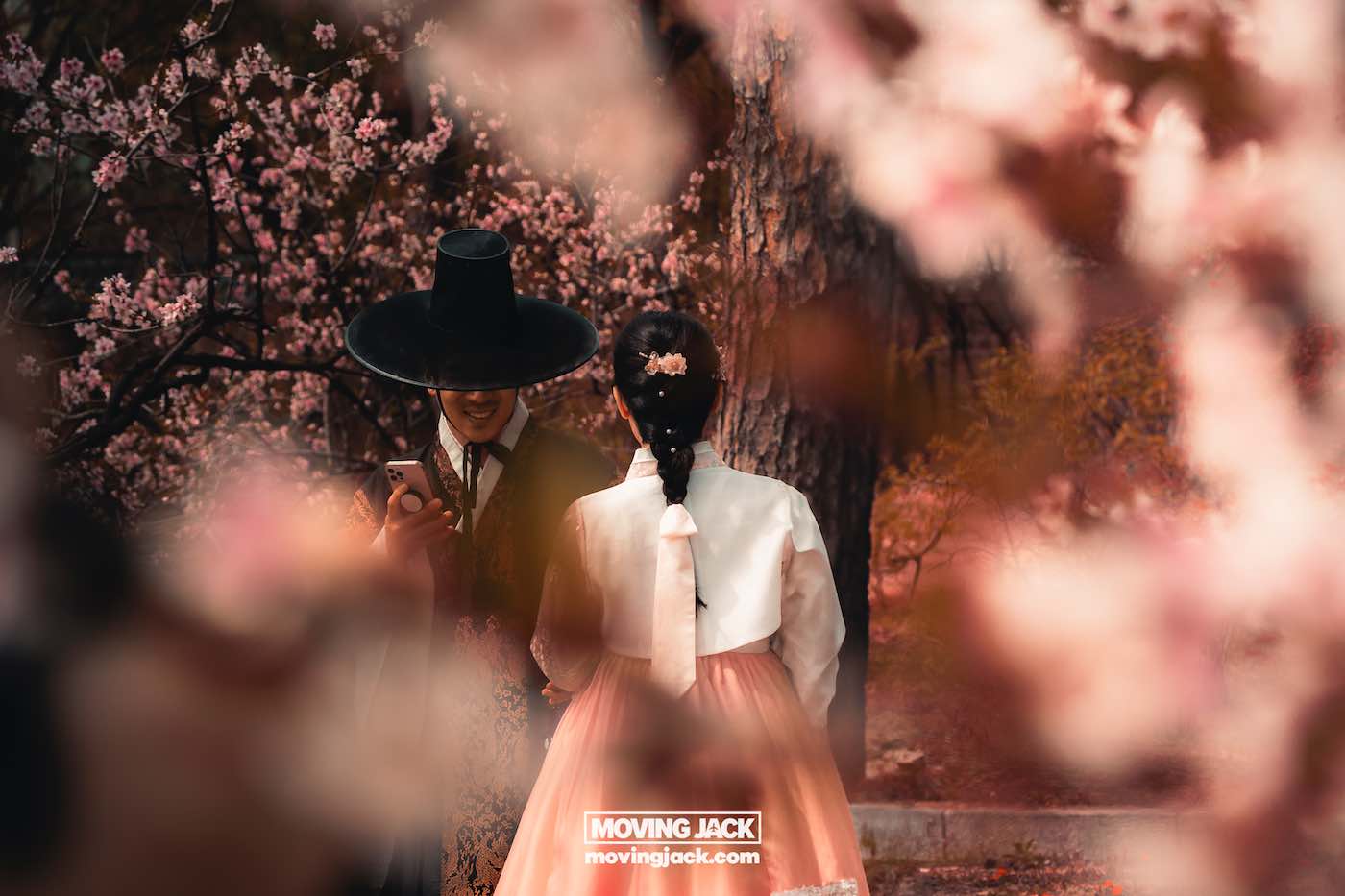

During cherry blossom season, food trucks and street vendors set up throughout the park. Evening visits are pretty cool when the trees are illuminated.
But, even outside cherry blossom season, the park is a nice place to visit to get away from the busy crowds.
Best time to go: Usually the second week of April for cherry blossom, though timing varies each year. Weekends are fine to go but try to go early to get an easy parking spot.
How to get there: Yeouinaru Station (Line 5)
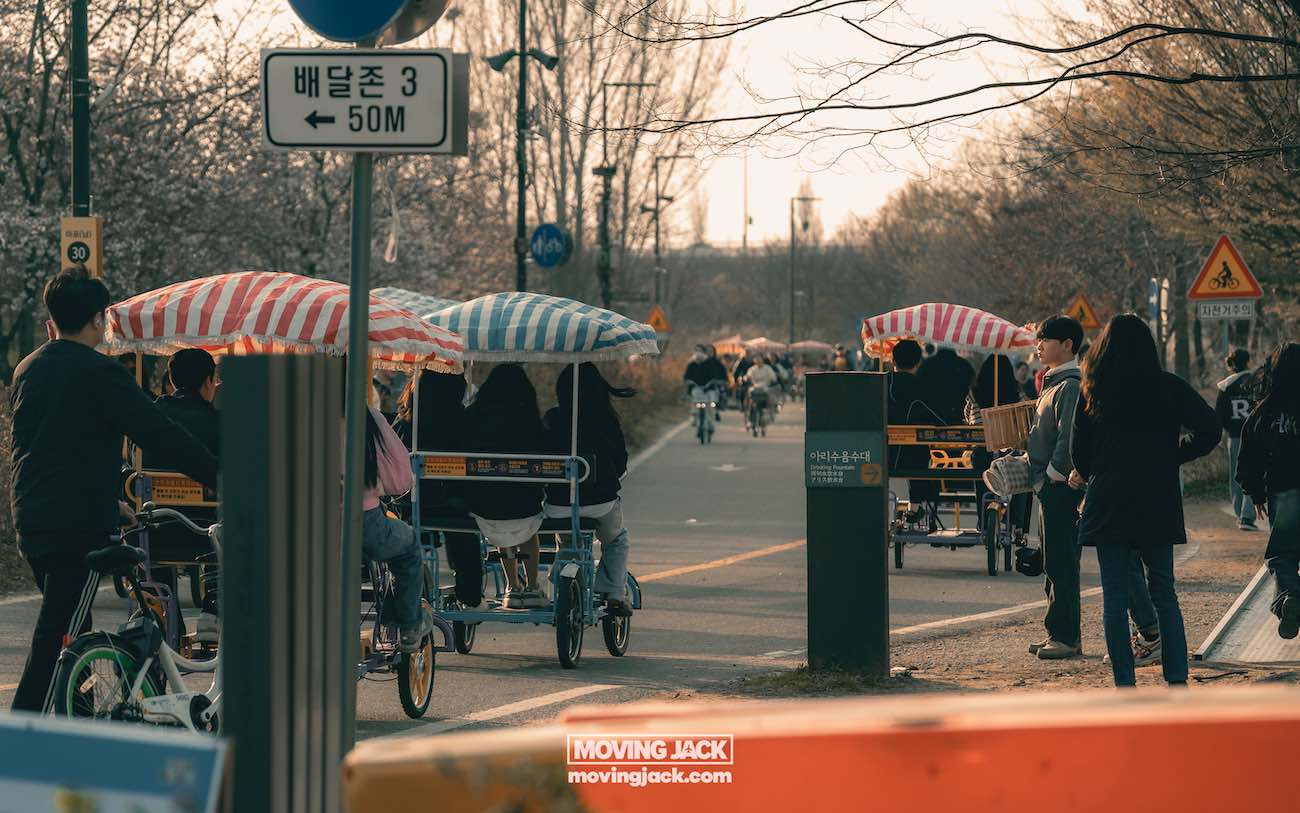
– Stroll Through Seoul Forest
This massive park includes deer enclosures, butterfly gardens, and many walking paths along the Han River. It’s kind of like the Central Park of Seoul, where families picnic and people take romantic walks.
The park is divided into different themed sections, so you can spend an entire afternoon there. The deer park is pretty cool, while the riverside path is more for joggers and cyclists. If you’re here during cherry blossom season, you’ll see lots of beautiful flowers.
After walking through Seoul Forest, go check out Seongsu-dong, one of the hippest and most fashionable areas of Seoul, also known as the Brooklyn of Seoul.
Best time to go: Any time of the day, weekends can be crowded, and traffic will be busy.
How to get there: There is a big parking lot within walking distance of the forest. Subway station: Ttukseom Park Station (Line 7)
– Haneul Park
Haneul Park is more of an activity area with lots of things to do. There is the Olympic stadium, a Botanic Garden, Oil Tank Culture Park, a public Pool, and many art statues scattered over the area. If you have a day to fill during your Seoul trip, it’s a great spot to check out. There are also plenty of shopping options.
How to get there: Digital Media City Subway Station
19. Free Museums in Seoul
There are quite a few museums with free admission that offer great insights into Korean culture and history.
Free museums that are worth visiting in Seoul:
– Audeum Museum (About the evolution of music speakers)
This place isn’t so much about Korean culture, but rather how music speakers have evolved, a pretty niche topic, but actually fascinating if you like music!
The building itself is already very impressive.
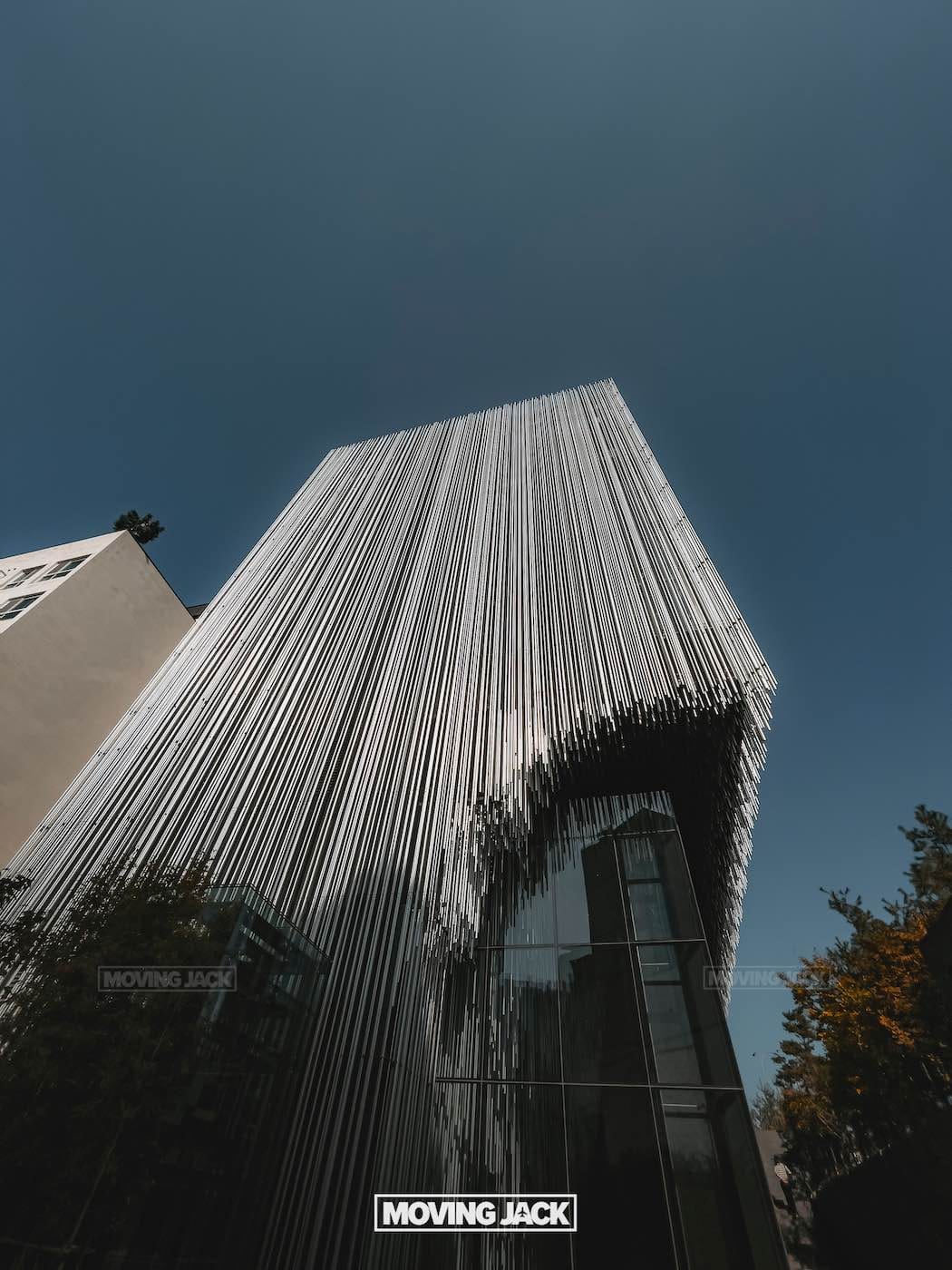
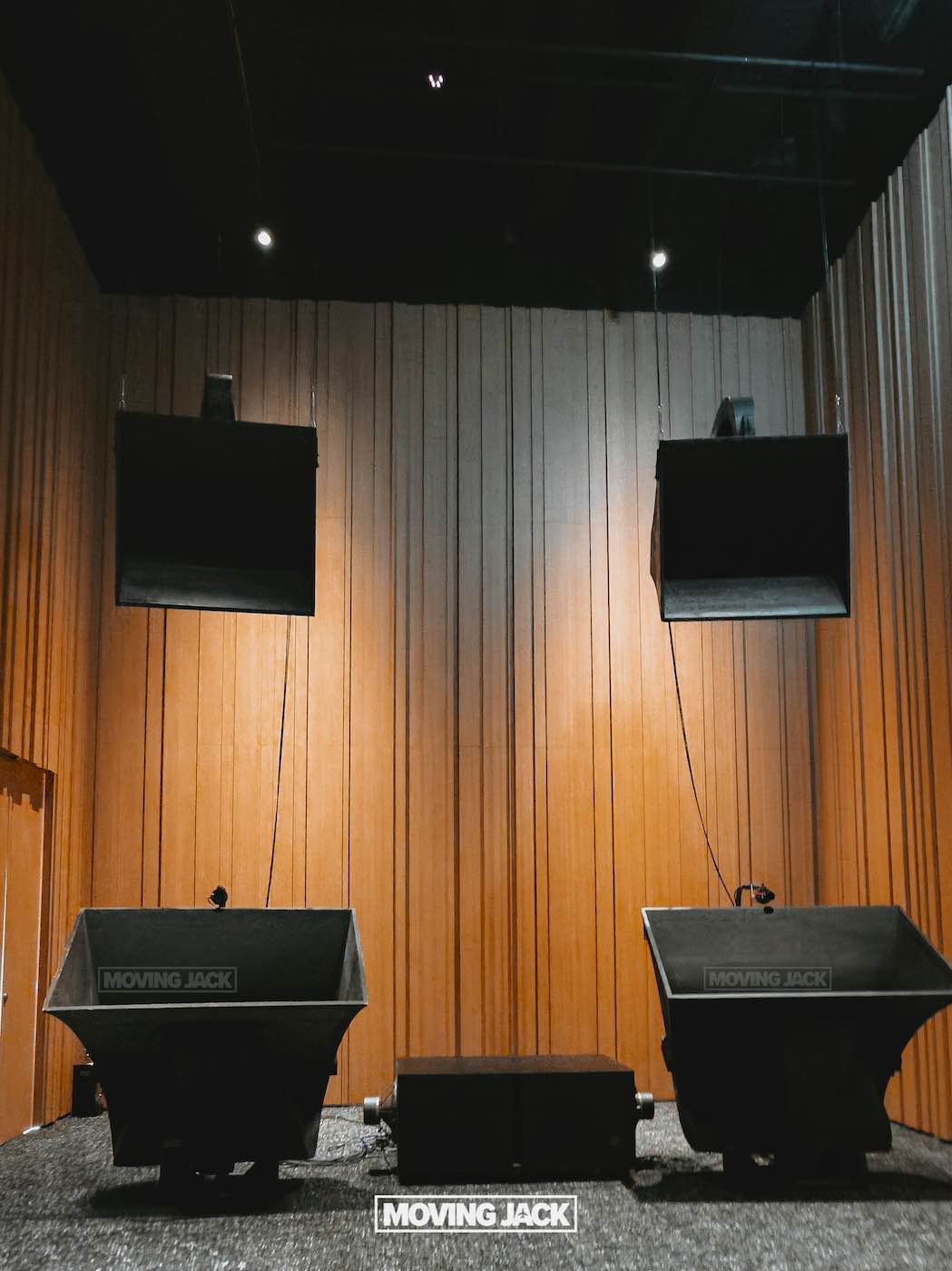
They have everything from ancient sound amplification devices to modern high-tech speakers, showing how we went from basic horns to today’s wireless systems.
At some point, they play music through these speakers, which are several meters wide (!). They played a song by Frank Sinatra and honestly, it was as if he was there… I’ve been making music all my life, and I’ve been a DJ before I embarked on this travel adventure, so I know what I’m talking about. Hearing this quality of sound was mind-blowing.
The tour ends in a special room where the best is saved for last. If you’re even slightly interested in music or sound, you must visit this museum.
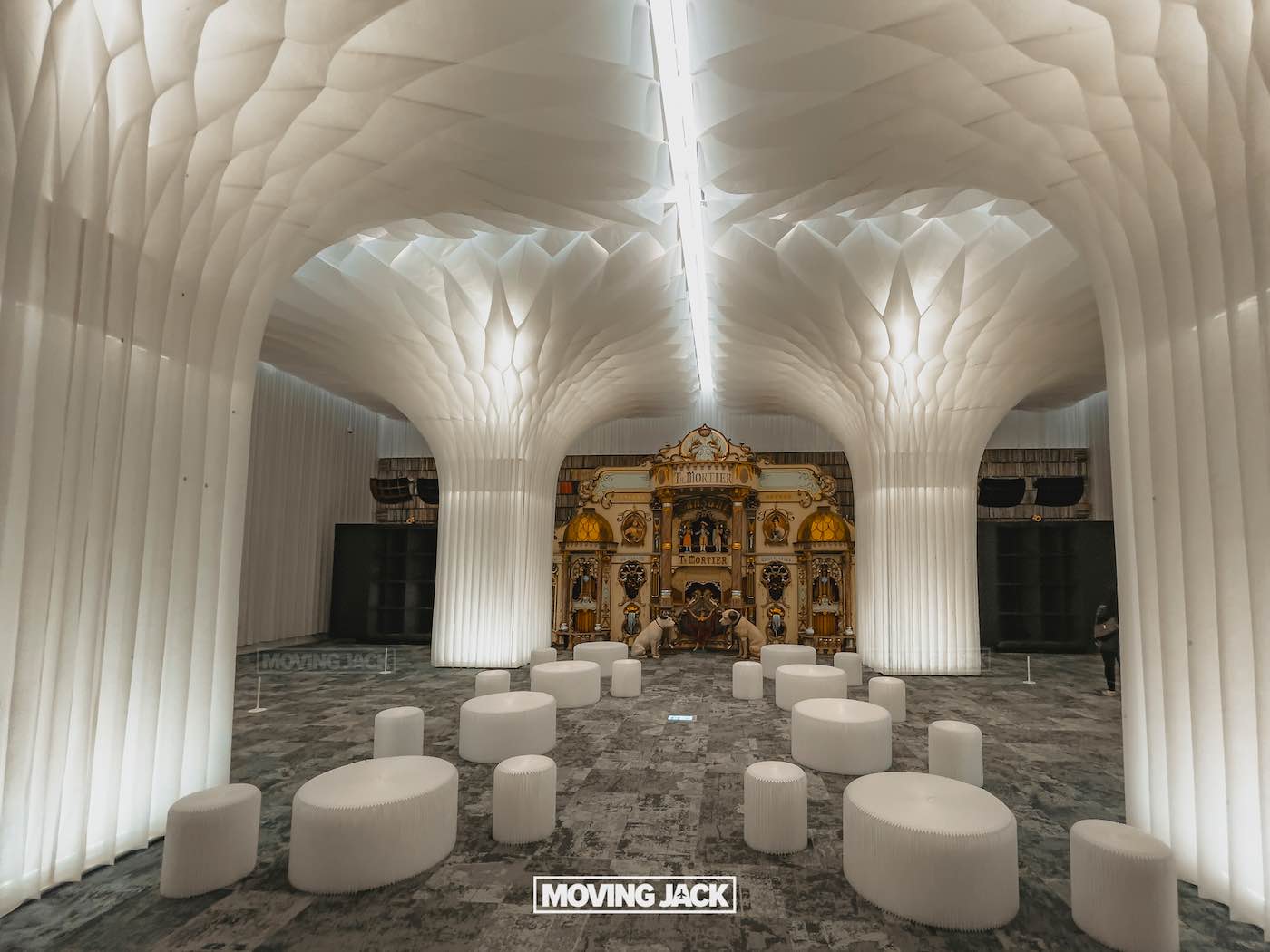
The museum is free, but you need to register in advance. Make sure to check the website a few weeks in advance and try to find a spot. You can’t go in unless you have a reservation.
– Leeum Museum
Located in Hannam-dong right near Itaewon, this contemporary art museum is in one of Seoul’s coolest neighborhoods. The building itself is architectural eye candy, and the collection mixes traditional Korean art with modern pieces really well.

After checking out the art, you can easily walk around Hannam-dong and Itaewon for great food and shopping; the whole area has this international vibe that’s fun to walk through.
The surrounding area is also interesting; it’s close to Hannam Dong and several fascinating shops.
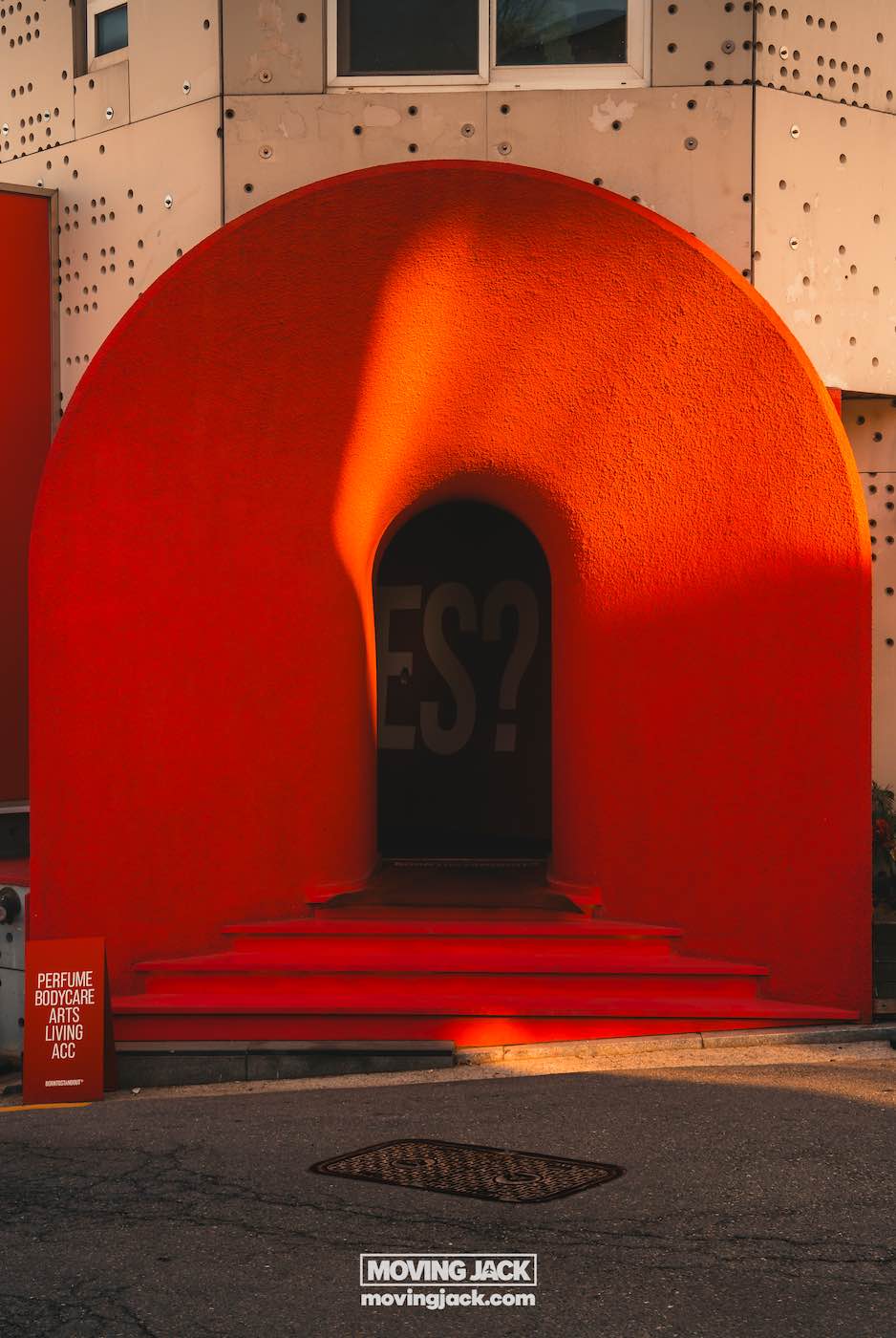
– National History Museum
This is the big one, Korea’s main history museum with everything from ancient artifacts to more recent cultural pieces. It’s massive so plan at least half a day, and the permanent collection gives you a solid foundation in Korean history and culture.
– The War Memorial of Korea
Heavily but impressively, this museum is about the Korean War and other military history, featuring numerous actual pieces of equipment, planes, and tanks displayed outside.
– National Museum of Modern and Contemporary Art
Seoul’s main contemporary art space features rotating exhibitions showcasing both Korean and international artists. The permanent collection gives you a good sense of how Korean art developed through the 20th century up to now.
It’s in a nice area where you can combine it with other activities, and the temporary shows are hit-or-miss but sometimes really impressive.
Best time to visit museums: Weekdays for fewer crowds, weekends can be crazy busy with even a line of cars already outside of the parking garage. Please check individual museum hours on the websites.
20. Free Workshops at Seoul Culture Lounge
To promote Korean culture, Seoul offers free workshops, including K-pop makeup application, traditional hat making, and gimbap (Korean sushi) cooking classes, among other activities for foreign nationals traveling or living in Korea.
The location is along the free Cheonggyecheon stream that runs through the city. So after or before the workshop, there is plenty to explore in the area, as this is right at the heart of the city.
How to get there: 11F, Seoul Tourism Plaza.
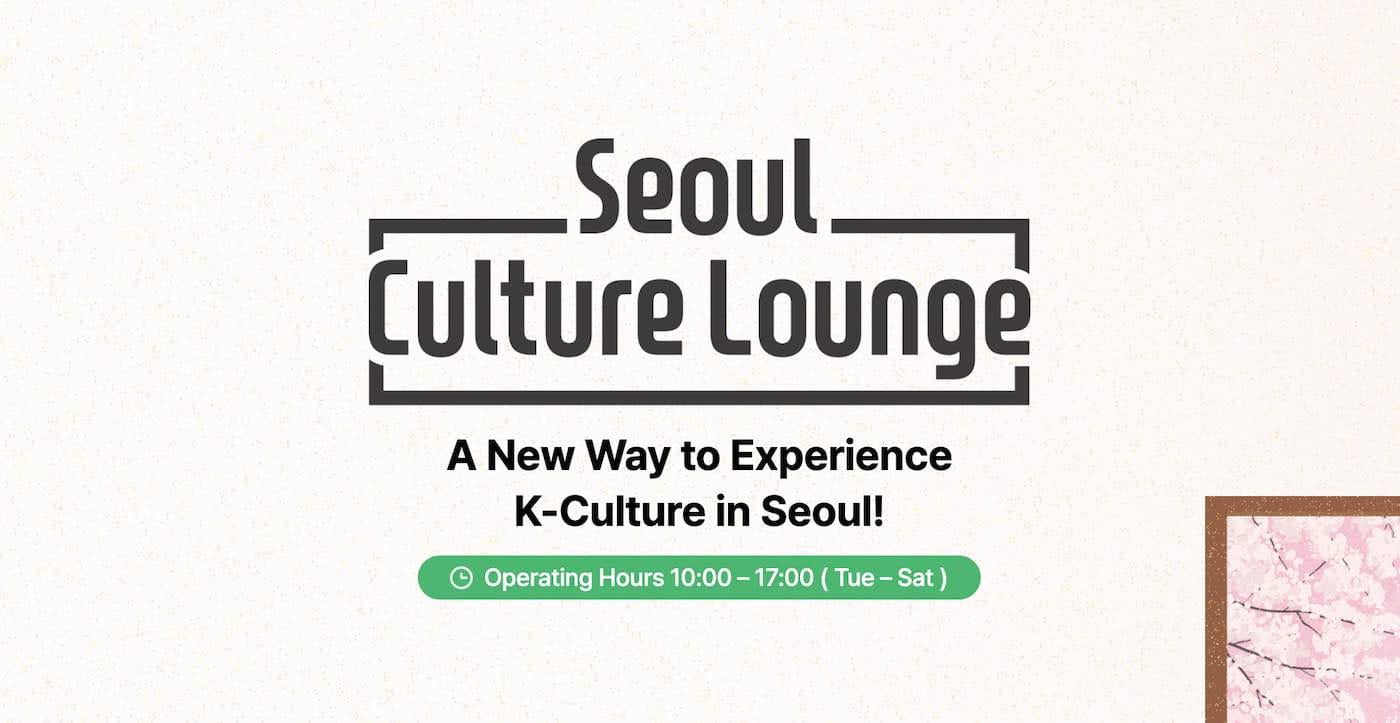
When taking the subway, exit Gwanghwamun Subway Station, Exit 5
Find all the latest info on the Seoul Culture Lounge website.
21. Starfield Library
You might have heard of the Starfield Library. If I’m completely honest, I don’t think it is worth the trip just to visit the library. But! If you’ve just visited a nearby temple and like to go shopping for a bit, it is worth the walk.
For shopping, it’s okay, but it is not as big as the Ipark Mall or the Hyundai Mall.
Best time to visit: Weekday afternoons, combine with COEX shopping
How to get there: Samseong Station (Line 2) – located in COEX Mall

22. Visit Seoul Plaza
Seoul Plaza is right at the heart of the busy city center. It’s a big grass field where various events are being held throughout the year.
Sometimes it’s filled with cushions you can relax on and read books for free, sometimes there are local bands playing, and in the winter there is an ice skate track.
If you’ve been shopping the afternoon in Myeongdong, it’s worth the walk to relax there for a bit.
How to get there: Seoul Plaza

23. Gangnam Style Statue at COEX
If you’re in Gangnam, it’s fun to check out the famous Gangnam style statue and make the famous “Gangnam-style dance move” photo. Why not! 🙂
How to get there: Samseong Subway Station (World Trade Center Seoul). Statue Location
Cheap Things To Do in Seoul
Besides these 23 free things to do in Seoul, there are a lot of activities in Seoul that are very cheap. Like I mentioned, the Korean government supports sports and cultural activities.
Here are the best cheap activities in Seoul:
24. Go Crazy at a Baseball Game
This is one of the best experiences you can have in Korea. Baseball is one of the most popular sports, and the vibe and energy at the stadiums are incredible. The best thing is that it’s really affordable!
Ticket prices start at around ₩12000, which is around 7 dollars! Tickets closer to the field will be more expensive, usually around ₩50,000 (36 dollars), which is still very affordable compared to many other big cities in the US, where baseball is also huge.
A game can easily last 2 to 2.5 hours, so that’s not bad for that long entertainment! Food and drinks are quite affordable as well, and there are convenience stores such as GS25 and 7-Eleven around the stadium.
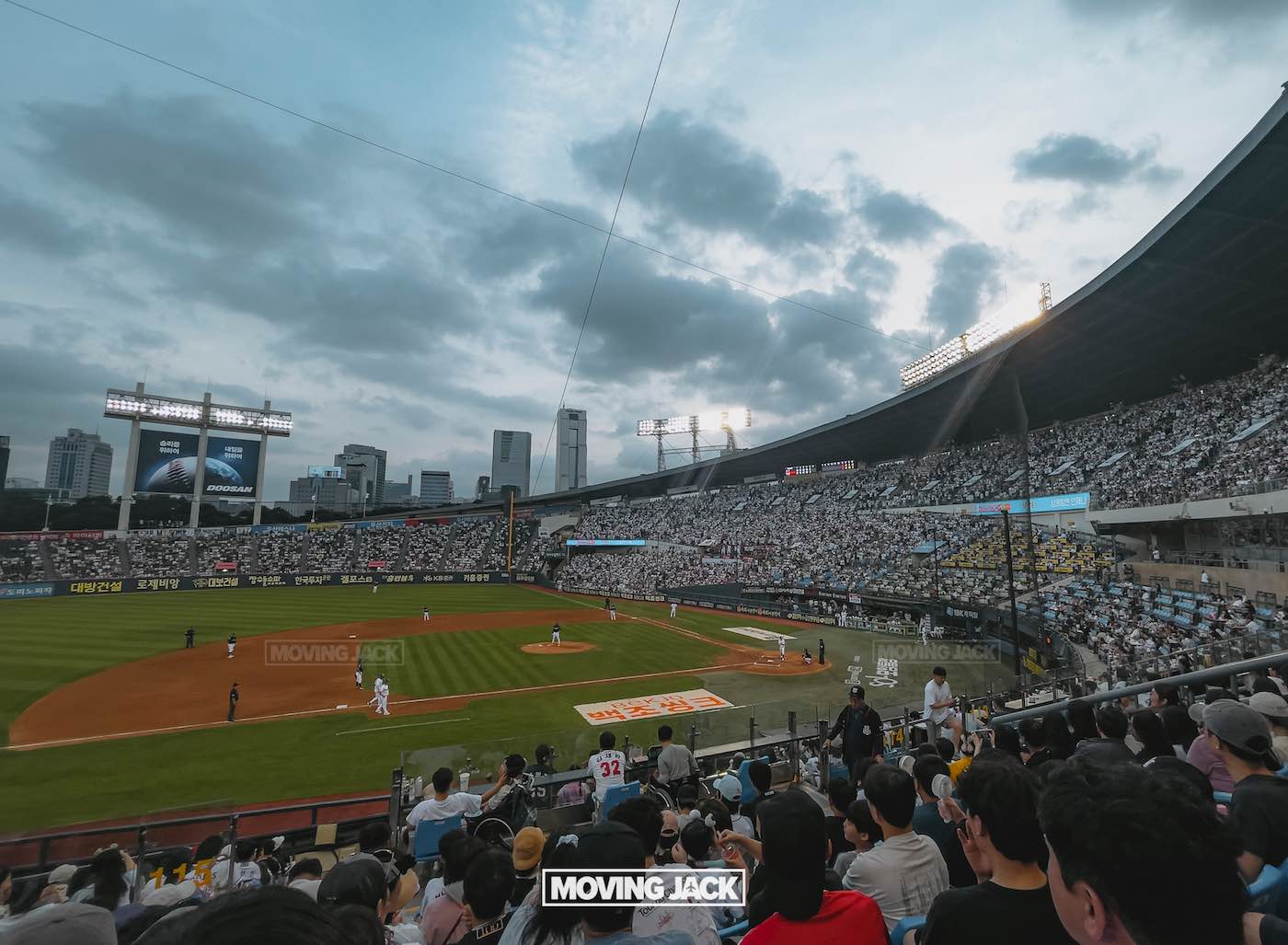
It’s a bit of a hassle getting to figure out how to buy tickets online, but with Google Translate, it will work.
Pro Tip: Go to a game of one of the lesser popular teams. You will have the exact same vibe and energy at the stadium, but you will be able to just get tickets at the booth, which might be a lot easier.
I highly recommend doing this ‘cheap’ thing in Seoul.
Ticket price: Starting from ₩12000 (7 dollars)
Ticket App: https://www.ktwiz.co.kr/ticket/reservation
Best time to go: Any time! But bring a cap or hat to protect yourself against the sun because the stadiums are open.
How to get there: Jamsil Stadium Subway Station. Read more info on the official Korean Baseball website.
➡️ Want the full experience? Book this activity with a local to experience the real ‘cheering culture’ at a baseball game. (It costs a bit more than getting a ticket yourself, but like I mentioned, those Korean ticket websites are a real hassle to work with…) It’s so much easier to get it here in advance. And it includes a Korean dinner, highly recommended!
25. Take a Dive at a Public Pool
Summer isn’t the best time to visit Seoul, but if you do go, a dive in a public pool is a fun and cheap thing to do to cool off. Along the Han River, there are multiple public pools.
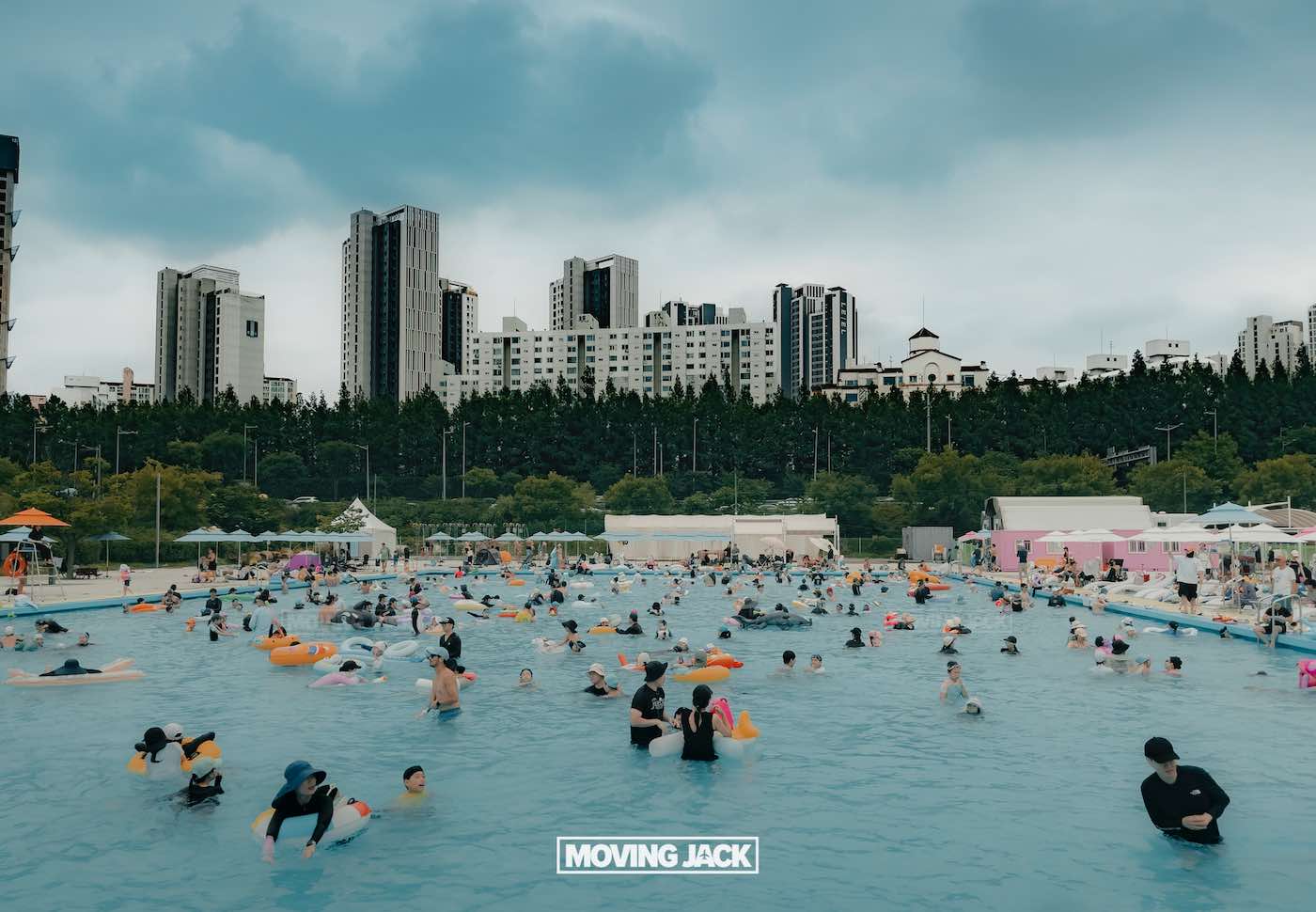
Pools: Jamsil Public Pool, Jamwon Outdoor Pool, Yeouido Pool
How to get there: The best way to get there is by taxi. Sometimes it’s very busy, so you might have to get out of the taxi a bit before and walk the last part.
Best time to go: Any time is good, except 6 pm, when lifeguards are on break and swimming is not allowed, although the pool area remains open.
Ticket price: ₩4000 (3 dollars)
26. Photo Booths
You’ve probably seen them a lot on the street in Seoul: 24-hour open shops where you can take photos. At first, I thought it would probably be expensive. To my surprise, photo booths are very affordable and so much fun.

Korean photo booths are great for saving memories of trips with friends or family. Put on some crazy items and snap away. The price is usually between $ 2 and $ 4 for two strips of 6 photos.
Usually, there are many fun items lying around that you can use to make a fun group photo. You can grab these for free, just put them back after the photo session.
I do this every time friends and family come over to Seoul, my fridge door is filled with photo booth photos!
Best time to visit: Any time, but the evening is when it’s most alive and might be more fun.
How to get there: Found in most shopping and nightlife areas and districts like Myeongdong, Hongdae, Gangnam, and Itaewon.
27. Visit The Palaces
Of course, the palaces are a must-visit when you’re in Seoul. My honest take? It’s all the visitors who wear the traditional Hanbok outfits that make it so spectacular. People from all kinds of backgrounds and cultures wear it, and it’s just so cool to see.
Gyeongbokgung Palace
Seoul’s biggest palace is an absolute must-see that might cost less than a coffee back home.

Pro tip: wearing a hanbok gets you free entry to all palaces! (Although renting the Hanbok isn’t free, of course, so how “free” is it then, you might think)
➡️ Want the full experience? Book this Gyeongbokgung Palace Hanbok Rental Experience that includes traditional dress and palace entry for an authentic royal experience!
Best time to visit: Morning for ceremonies and fewer crowds, spring/autumn for the weather
How to get there: Gyeongbokgung Station (Line 3) or Gwanghwamun Station (Line 5)
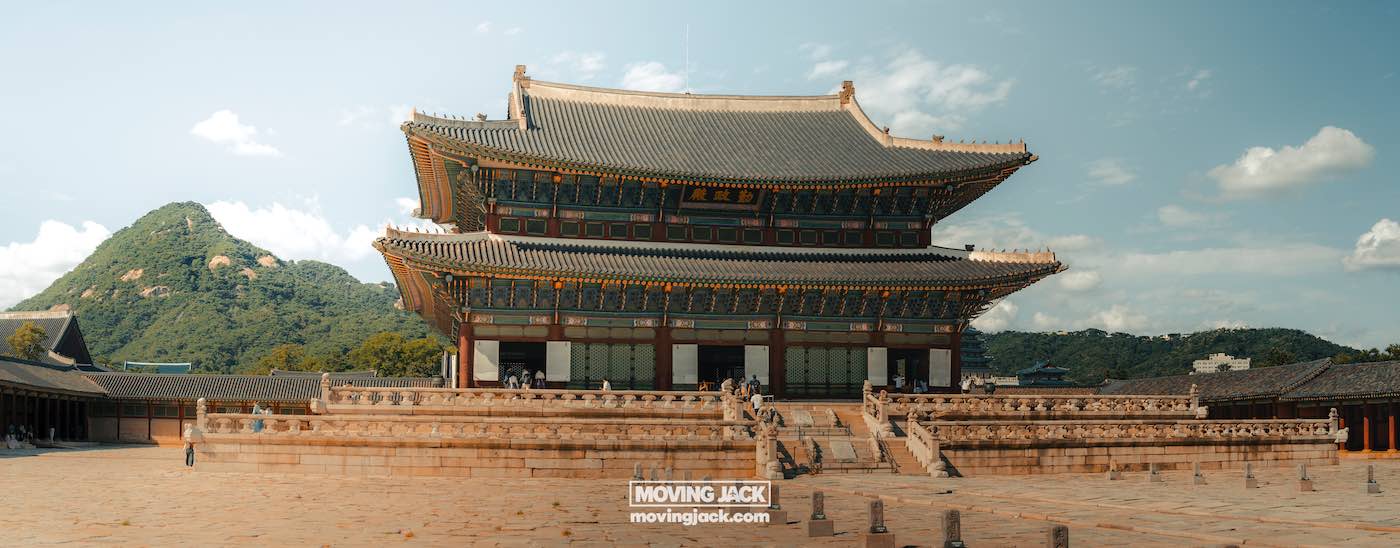
Discover Deoksugung Palace
This unique palace is a mix of Korean and Western architecture. The contrast between traditional buildings and European-style structures tells the fascinating story of Korea’s encounter with the Western world.
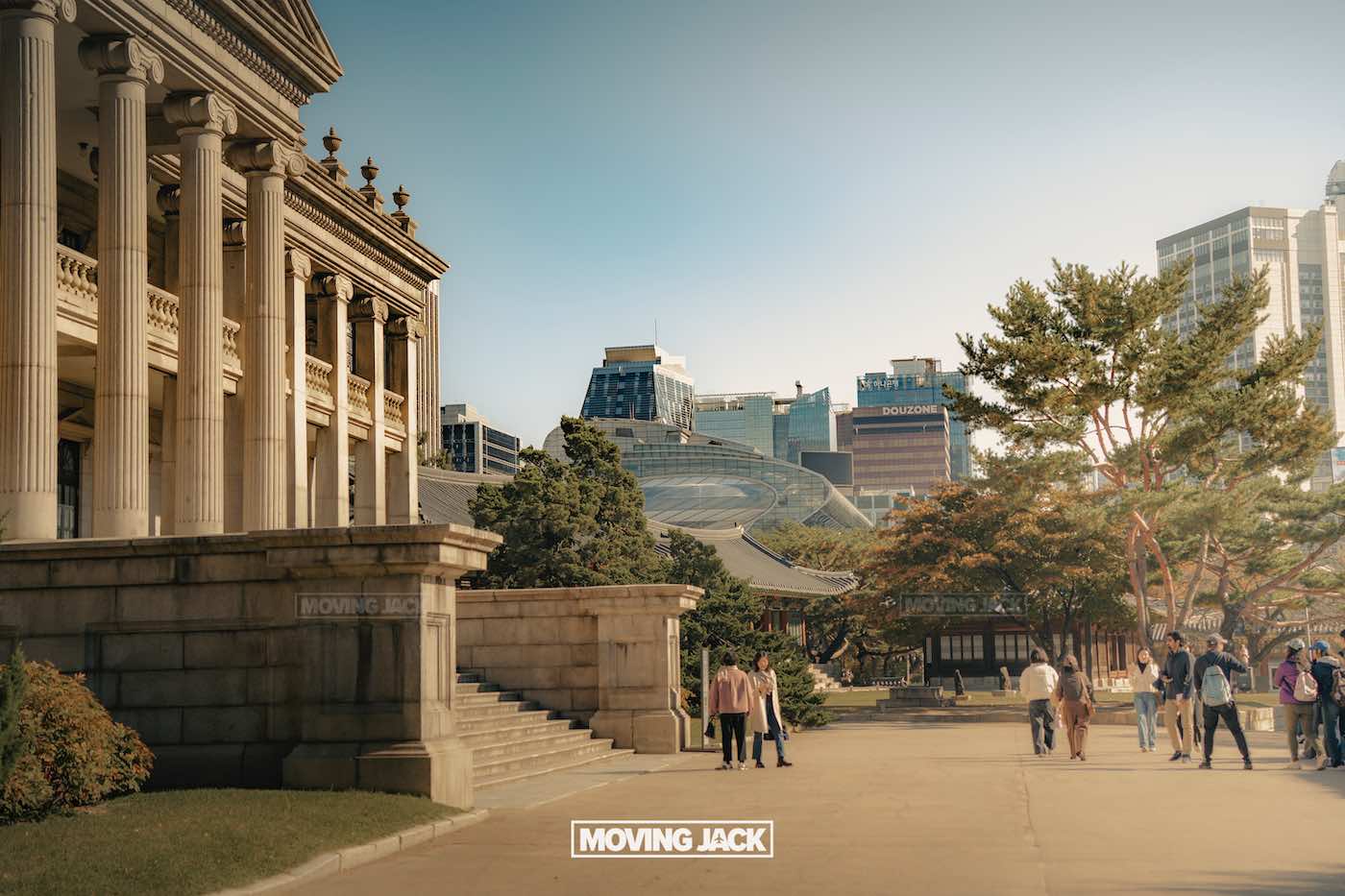
The changing of the guards ceremony here is actually more fun than the one at the big Gyeongbokgung palace.

What I also like about his palace is that it’s right at the heart of the city. So at the front entrance you see these traditional Korean structures surrounded by ‘New York’ style shops and buildings. This contrast and diversity is just really cool, and makes for some great photos!
One photo, a whole world of culture!
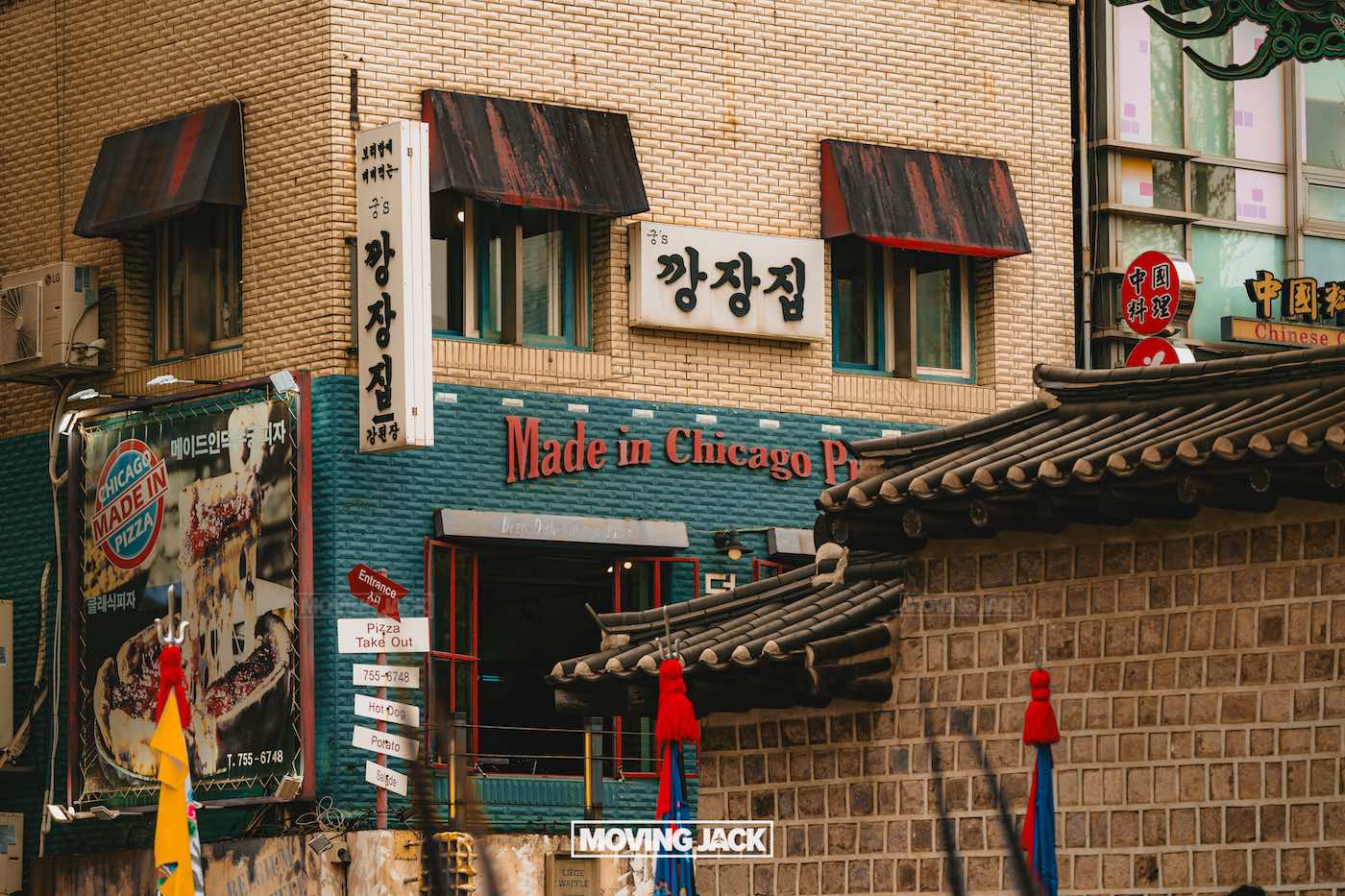
Best time to visit: any time and day, except Monday. On Monday, there isn’t a guard ceremony. And sometimes the day after a national holiday the palaces are closed.
Ticket price: ₩1,000, which is less than a dollar.
How to get there: City Hall Station (Lines 1, 2)
➡️ Looking for the full experience? Joining a tour with a guide gives so many more insights instead of just walking around clueless (like I did many times…). This tour goes through the palace, Bukchon Hanok Village and Gwangjang market with an amazing guide.
Best time to visit: Plan visits across multiple days within the month’s validity
How to get there: Purchase at any participating palace
28. Experience Jongmyo Shrine
This sacred Confucian shrine honors the Korean royal ancestors through centuries-old rituals. The long, simple wooden buildings create a solemn, spiritual atmosphere completely different from the colorful palaces. UNESCO recognized it for preserving authentic Confucian memorial ceremonies.
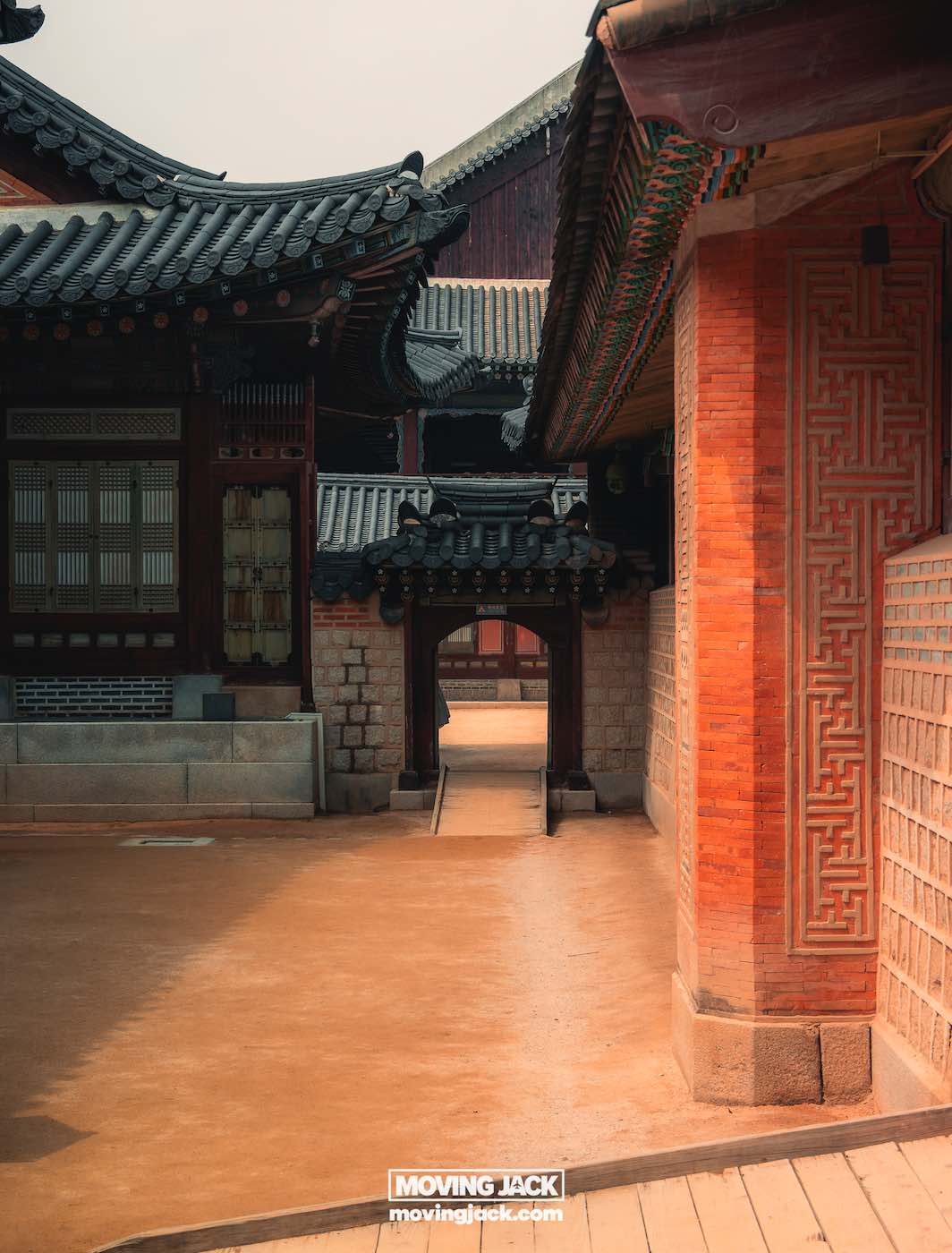
Best time to visit: First Sunday in May for Jongmyo Daeje ceremony, any time for peaceful contemplation
Ticket price: ₩1,000
How to get there: Jongno 3(sam)-ga Station (Lines 1, 3, 5)
29. Explore Gwanghwamun Plaza
This is the main square of Seoul, leading directly to the grand palace. Big chance you’ll pass this square during your trip in Seoul.
What’s great about the place is that there are many (pop-up) events throughout the year. The event featured a big Squid Game, a giant inflatable water slide, music events, and a light show. Most of these events are free or very cheap to visit.
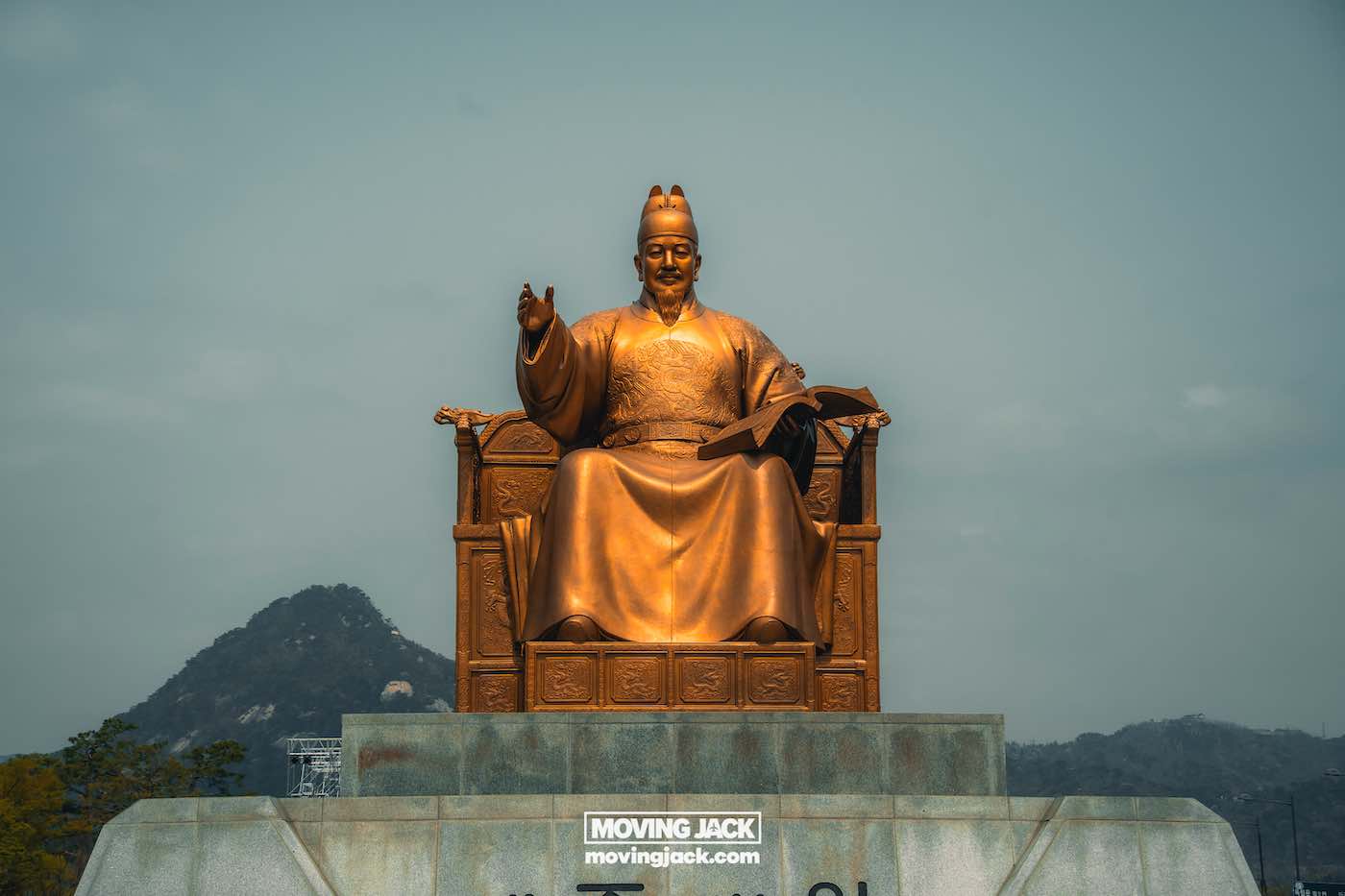
Best time to visit: Any time of the day. Check out the Gwanghwamun official website with an event calendar. (The English version of the website doesn’t always work, so you might have to use Google Translate.
How to get there: Gwangamun Station
30. Spend a night in a Temple
Close to Incheon Airport in Seoul, there are several temples where you can spend a night. These temple stay experiences are a truly unique and cool thing to do.
Spending the night costs around 30.000 won, which is 22 dollars. So that’s not bad for a place to stay!

Don’t expect a soft bed and a luxurious room, tho, but it is such an incredible and unique (and cheap!) experience.
Best time to visit: Temple stays are only available from Monday ot Tuesday at Tempelstay.com, although there are other temples in South Korea as well, of course, that might offer different time slots.
How to get there: Templestay.com has all the info to make a reservation.
Costs: ₩30.000
31. Seodaemun Prison History Hall
The prison museum, located in a former jail that opened in 1908, used to house Korean patriots during the colonial era.
Best time to visit: Weekdays for fewer crowds, allow 2-3 hours
How to get there: Dongnimmun Station (Line 3)
Costs: ₩3000 (2 dollars)
Getting Around Seoul
Seoul is a convenient city, although there are quite a few traffic jams during the day, especially during rush hours around 8:30 am and 6 pm. Weekends tend to be really busy. In fact, traffic is so busy that we haven’t gone outside of the city that often because it just takes too long by car.

Subway
Seoul’s subway system is your best friend for budget travel. A single ride costs ₩1,470 (about $1), and the network reaches every neighborhood worth visiting. Trains run every 2-4 minutes during peak hours and are incredibly punctual. You can see the train live on a screen at the platform!
T-money card
The T-money card makes riding very convenient, just tap in and out at the gates. You can refill cards at any station, and they work on buses and taxis too. Late-night subway service runs until midnight on weekdays and 1 am on weekends. After that, night buses run major routes, though they’re less frequent and cost slightly more. Taxis are reasonable for short distances but can get expensive during rush hours or late nights.
Climate Card
There is also a ‘climate card’, which is similar to the regular T-money card, but it comes with a bundle. For 1 day, you can use the subway unlimited for 5000 won. It sounds like a good option, but in my experience, you will not take the subway more than 2 or 3 times a day. The subway can take quite a long time, and since one ride costs only $1400, it may not be worth it. But if you plan on taking more than 4 rides, go for the climate card.
Electric Bikes
You can also rent electric bikes. If you’re 15+ and have a phone, you’re good to go. Just download the Seoul Bike app or go to the website (bikeseoul.com) to buy a pass. Then pick your station and bike, swipe your card on the terminal, and let’s go. That’s it!
But I do have to mention that I thought renting a bike would be cheaper. You’ll quickly spend a few dollars, so it might not be worth it, plus there aren’t many cycling lanes in Seoul. So, it can be a bit tricky to ride a bike through the city.
Taking the bus
The buses are a great option to get around in Seoul. I actually prefer it sometimes over the subway because you get to see more of the city, it’s like a free little city tour when you take the bus. Use the T-money card you bought at the subway station or convenience store to pay.
Tip: Download Naver Maps to find out which bus or subway you need to take. Naver is like the Google of Korea and works amazingly for finding your way through the city.
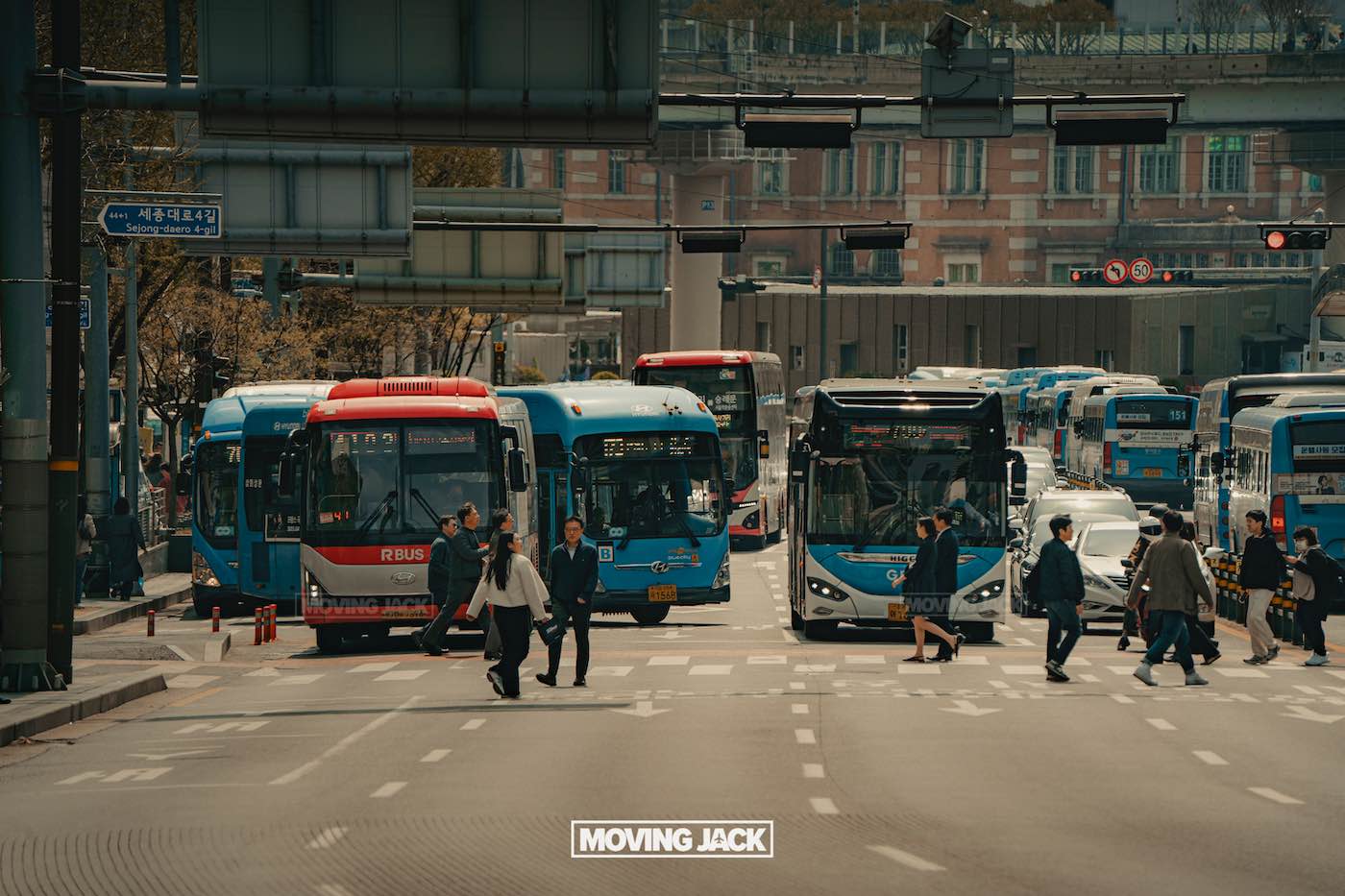
3 Questions About Free Things To Do In Seoul
Hopefully, these activities and things to do will make your Seoul trip even more memorable. If you have any questions, here are some quick answers to frequently asked questions about Seoul.
What are the DOS and DON’TS in South Korea?
When greeting people, bow slightly; when entering homes, remove your shoes; and when giving or receiving items from older people, use both hands. DON’T point with a single finger, blow your nose in public, or stick chopsticks upright in rice bowls.
Is Seoul expensive?
Seoul can be expensive if you stick to tourist areas and international hotels, but local food, public transport, and many attractions are incredibly affordable. Street food meals cost $3-5, subway rides are $1, and many temples and parks are free. Korean BBQ, although a local food, is quite expensive.
Is visiting Seoul worth it?
Absolutely. Seoul is an amazing mix of history, cutting-edge technology, amazing food, and a unique and fascinating culture in ways that no other city has.
Final Thoughts & Tips
Living in Seoul for several years meant I had to find my way, discover local activities, and immerse myself in the culture. Especially for my blog, I dived deep into all there is to know about the city over the years, and there is still so much to discover.
I hope this list of free things to do in Seoul will help you explore and enjoy the city even more.
My biggest tip? Don’t try to see everything in one trip.
Two reasons:
1. Getting around in Seoul can take longer than anticipated. Subways arrive every few minutes, but the distances you’ll need to walk between transfers and the stairs to get back on the street can take pretty long.
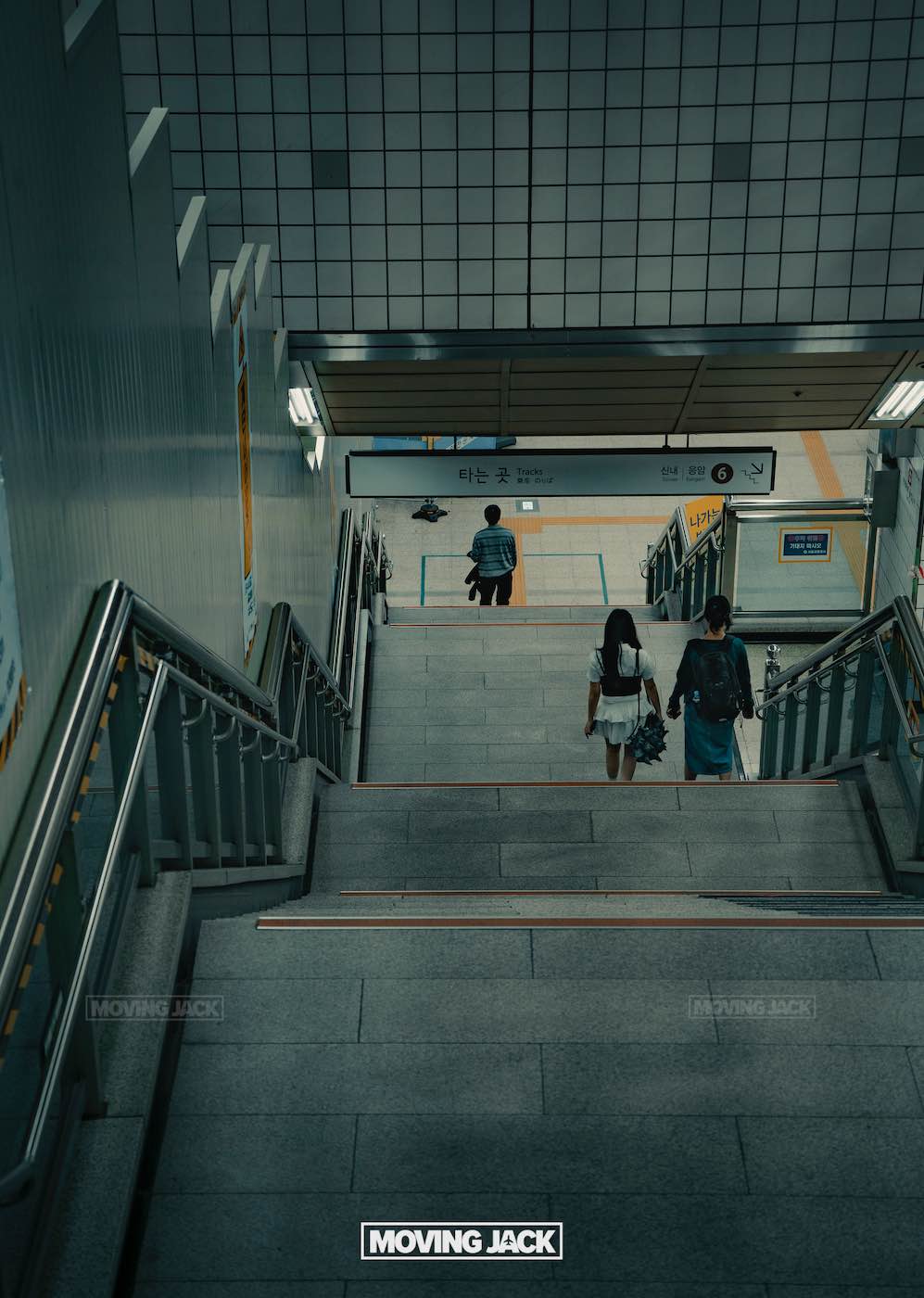
2. By picking only a few or maybe one neighborhood and really exploring them, you really experience the city. Many areas in Seoul have numerous narrow and hidden alleys, which are great for wandering around. You can easily discover a hidden coffee spot that you wouldn’t have found anywhere else online.

Also, talk to locals (they’re very open and friendly), try street food that looks interesting, and be open to unexpected discoveries when you go inside a building on a random 4th floor.
The combination of free and incredibly affordable things to do in Seoul means you can have a fantastic time regardless of your budget. Safe and happy travels!



